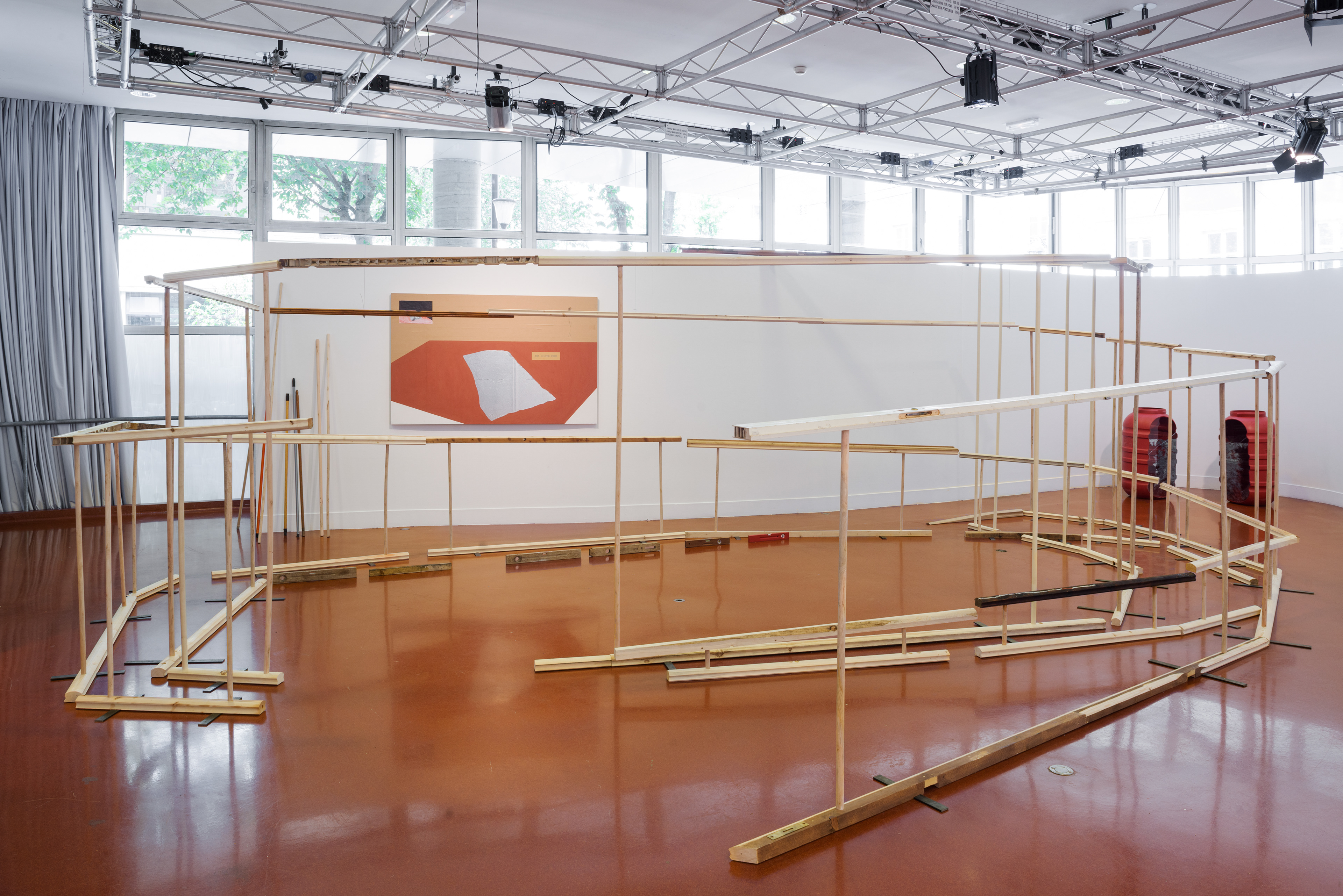
©Maxime Bagni 📷 Arthur Crestani
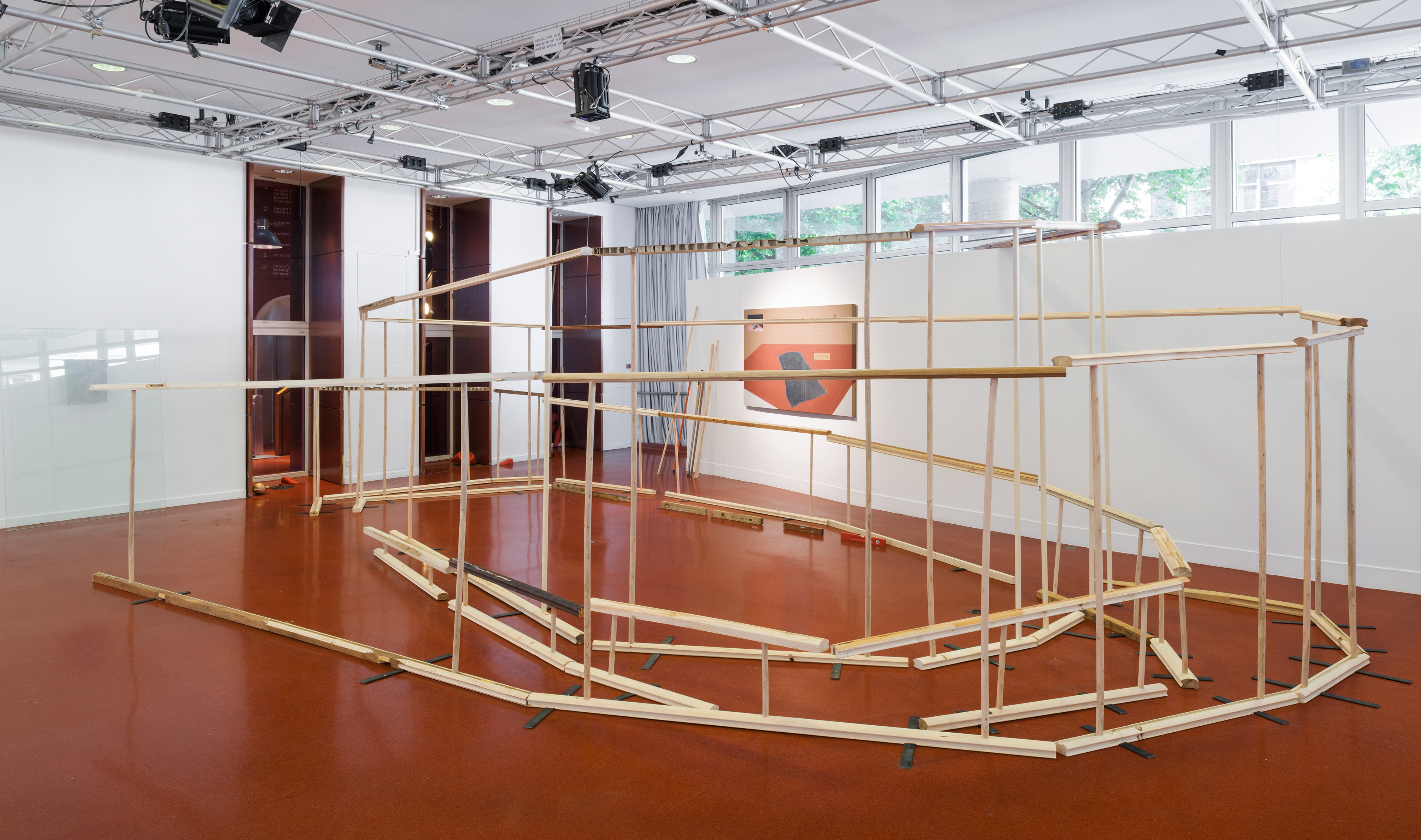
©Maxime Bagni 📷 Arthur Crestani
The Inhabitable Flesh of Architecture, 2022
Scroll down for the text in english
J’ai conçu cette installation comme la mise en place d’une fondation, une architecture dissimulée, récit intérieur et propre aux objets dont l’apparence entre en contact avec l’anodin.
Ainsi, le seuil entre l’intérieur et l’extérieur des oeuvres présentées est brouillé. Les débris des chantiers voisins à mon atelier d’Ivry-sur-seine sont collectés, transformés, pour dialoguer avec la logique architecturale de cet espace d’exposition. Des bennes, ou du sol où ils sont enfouis - invisibilisés - je les déterre pour leur donner une autre des propriétés de ce qui est enseveli : la fondation.
Tous les éléments collectés, les fûts, les bois formant la rampe, les balais, le verre, conservent un lien fort avec leur site d’origine. Leur déplacement s’est opéré spatialement, mais aussi symboliquement : des chantiers de banlieue du Val-de-Marne où rien ne les dissociaient du banal, à l’espace d’exposition et sa logique rouge, intérieure, fantasmagorique. Les débris deviennent l’ombre de l’architecture, une empreinte du bâtir, somme de gestes anonymes. C’est à la fois le vestige d’une dépense et déjà le monument.
Les mouvements qui m’intéressent le plus sont, selon une expression Deleuzienne, des mouvements aberrants. Ils obéissent à une logique qui ne tient pas au rationnel et nous décentrent. Ainsi la fragilité des fûts, rendus indéplaçables par l’ajout de verre, indistinctement de leur poids. La spirale de la rampe obéissant à sa logique qui confond début et fin, mouvement ascendant et descendant, ce qui fonde et qui est fondé. De même les miroirs crées pour l’installation, à partir d’un métal de thermomètre au point de fusion de 37 degrés, ont le potentiel de se liquéfier et goutter à température ambiante, alimentent une confusion entre image et matière.
Dans cette exposition, la fonction sculpturale tend à empiéter sur l’environnement. Ici tout est paysage. Les sculptures qui composent l’installation sont faites de la matière du quotidien, du monde des échanges, du travail, du domestique. Elles témoignent pourtant de fonctions pré-architecturales réelles ou rêvées : mobilier, structures, mécanismes, outils de mesure de l’espace, de la température. Le corps est, dans cette logique métaphorique, présent dans ces objets.
S’il l’est par les représentations - les fûts comme deux poumons, l’image dans les miroirs ou l’omniprésence du rouge chair - ce sont aussi des attributs psychologiques qui augmentent sa présence. La tâche de Rorchach argentée, les fragments de textes aux accent inconscients, sont autant de formes simples déplacées, engageant plusieurs niveaux de lecture.
Le couvercle d’un bidon, résultat de la fonte de plombs typographiques et de poids de plongée sous-marine, est la tentative alchimique d’alliance entre la lettre et la descente dans une abysse. Dans cette fusion, la lettre, symbolique du récit rencontre le mouvement aberrant de son entrainement dans les profondeurs de la psyché.
La main humaine est ici, selon la formule de Marguerite Duras, une main négative : dans la forme des débris taillés en main-courante d’escalier, fait pour la préhension, celle-ci est omniprésente. Dans les manches d’ustensiles aussi.
Nombre de matériaux utilisés dans l’exposition sont en lien avec le soin. On a prêté au plomb et au mercure des propriétés curatives, leur toxicité n’est plus à démontrer. Le concept platonicien du Pharmakon, un même objet qui peut être poison et remède, m’aide à trouver une perspective plus personnelle dans le cycle de vie et de mort, du nouveau et de l’ancien. Par ce lien, je peux cesser de voir une opposition angoissante, et apprécier les transformations à l’oeuvre dans toute chose qui s’effondre.
J’ai pensé cette proposition en cherchant des ressources tant chez les artistes, les auteurs/trices que chez des architectes. Marco Cruz, à qui j’emprunte ce titre The Inhabitable Flesh of Architecture, a recours à l’analyse d’oeuvres d’art dans sa théorie de l’architecture. De la même manière j’ai recours à l’inspiration de bâtiments : en abolissant toute distinction entre fonctionnel et déserté, habitable et inhabitable.
©Maxime Bagni
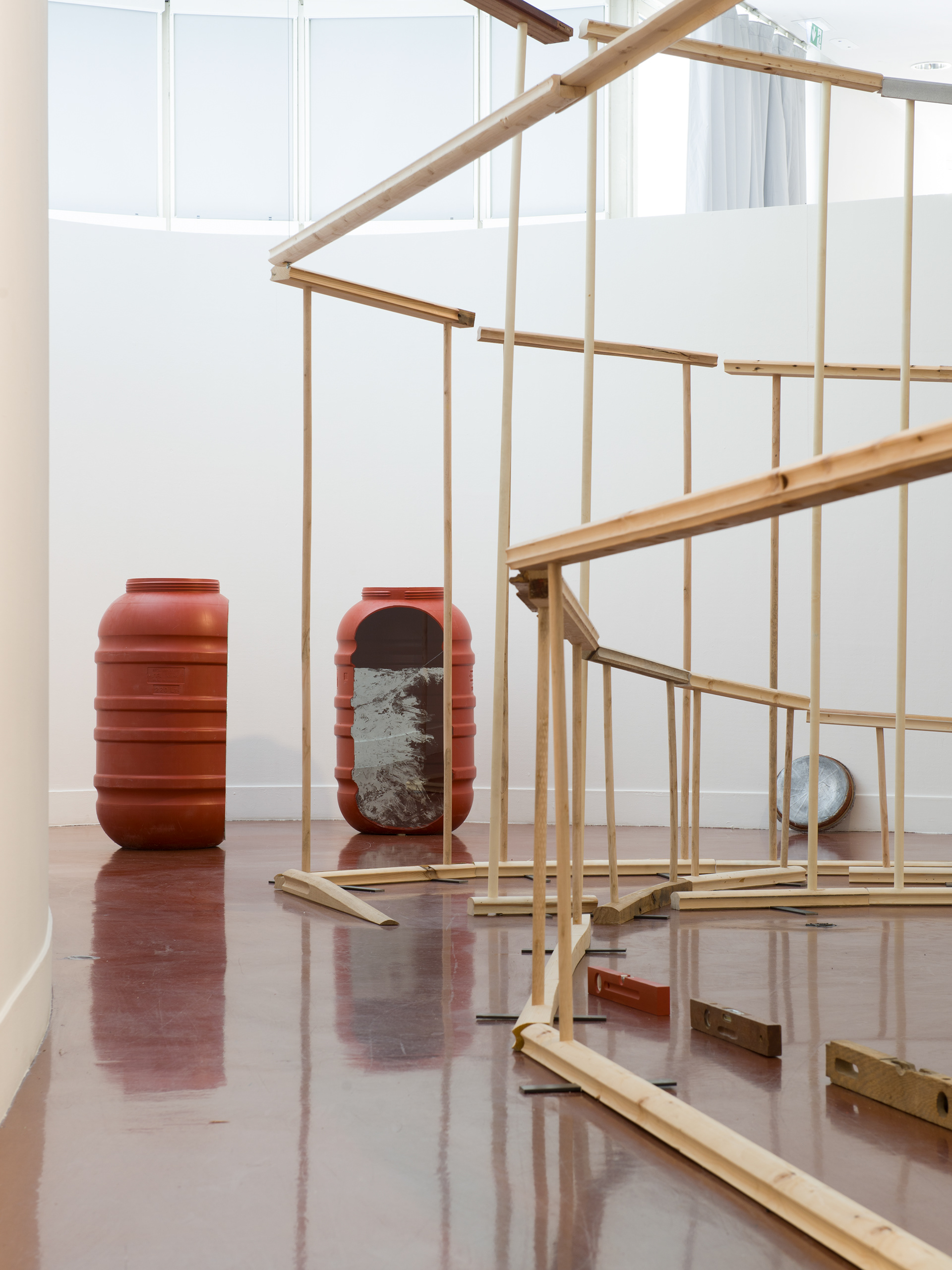
©Maxime Bagni - 📷 Arthur Crestani

©Maxime Bagni - 📷 Arthur Crestani
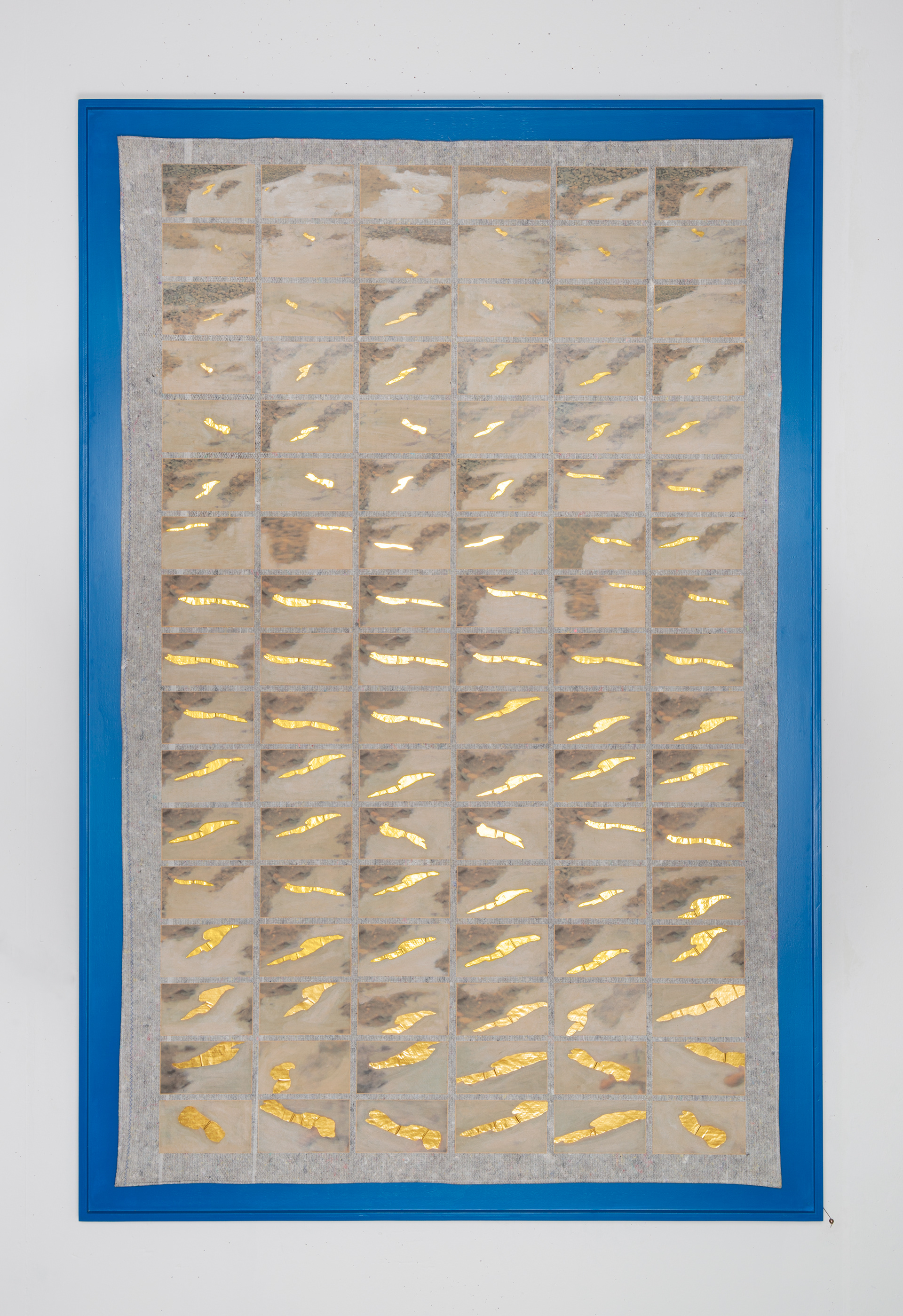
©Maxime Bagni - 📷 Arthur Crestani
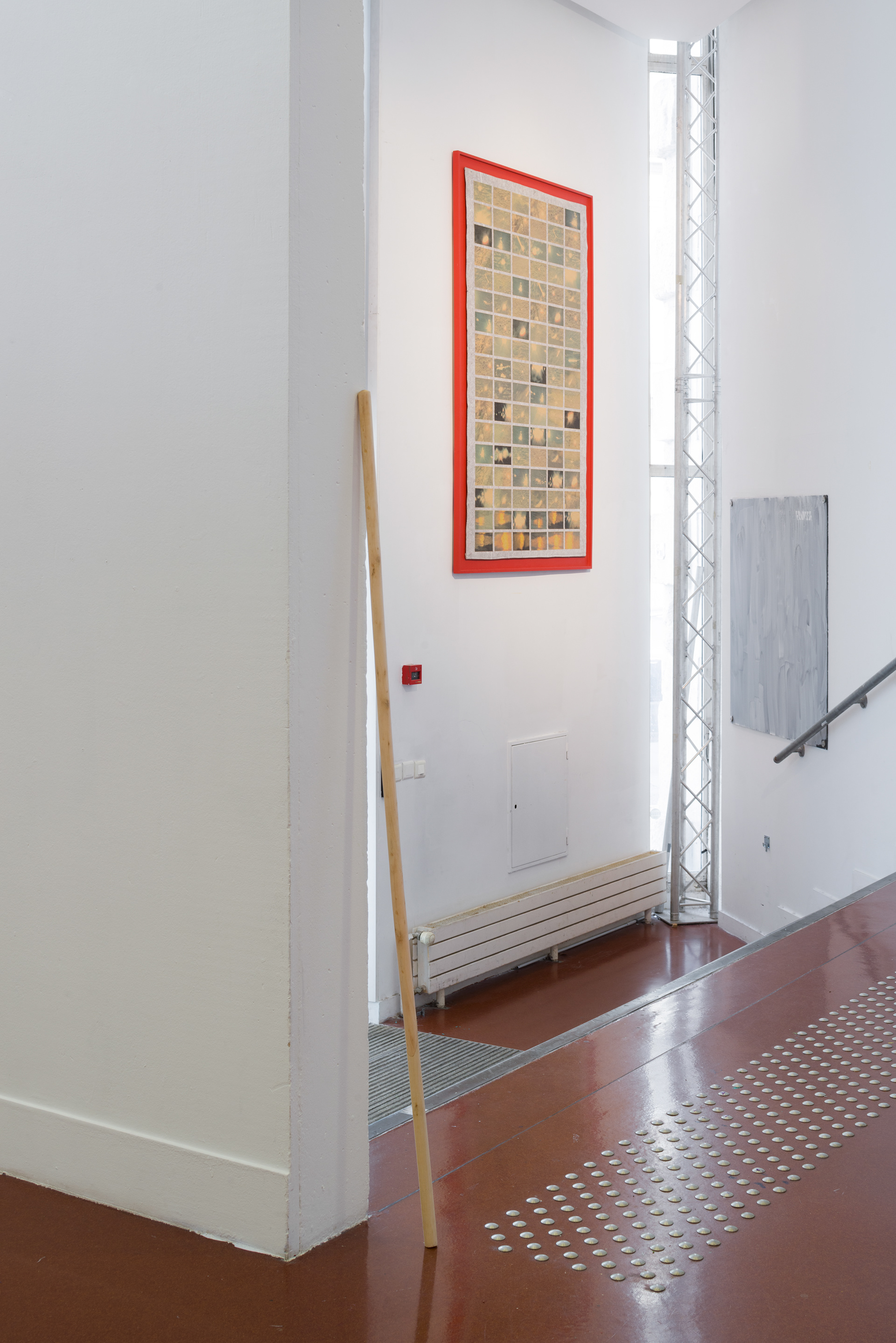
©Maxime Bagni - 📷 Arthur Crestani
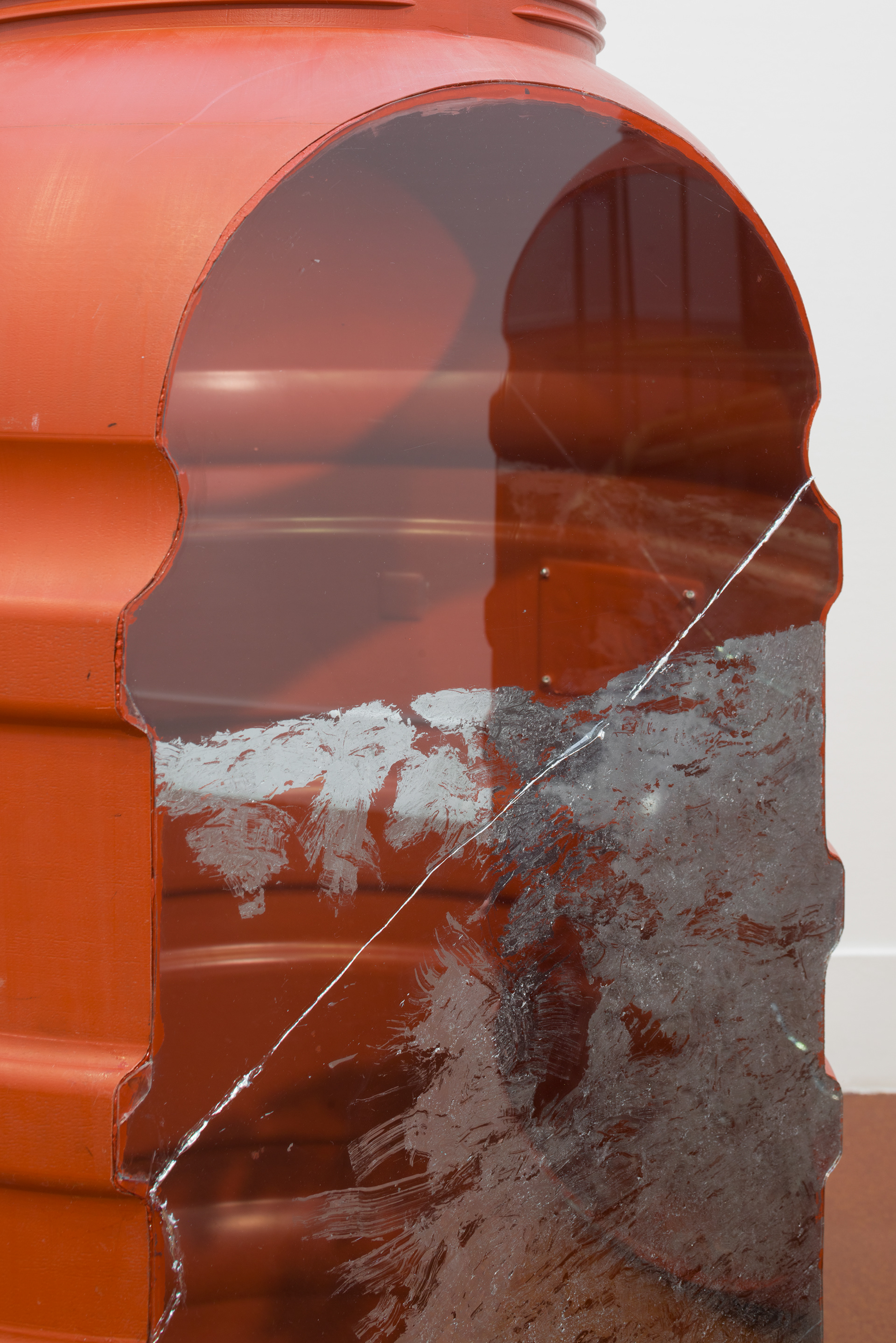
©Maxime Bagni - 📷 Arthur Crestani
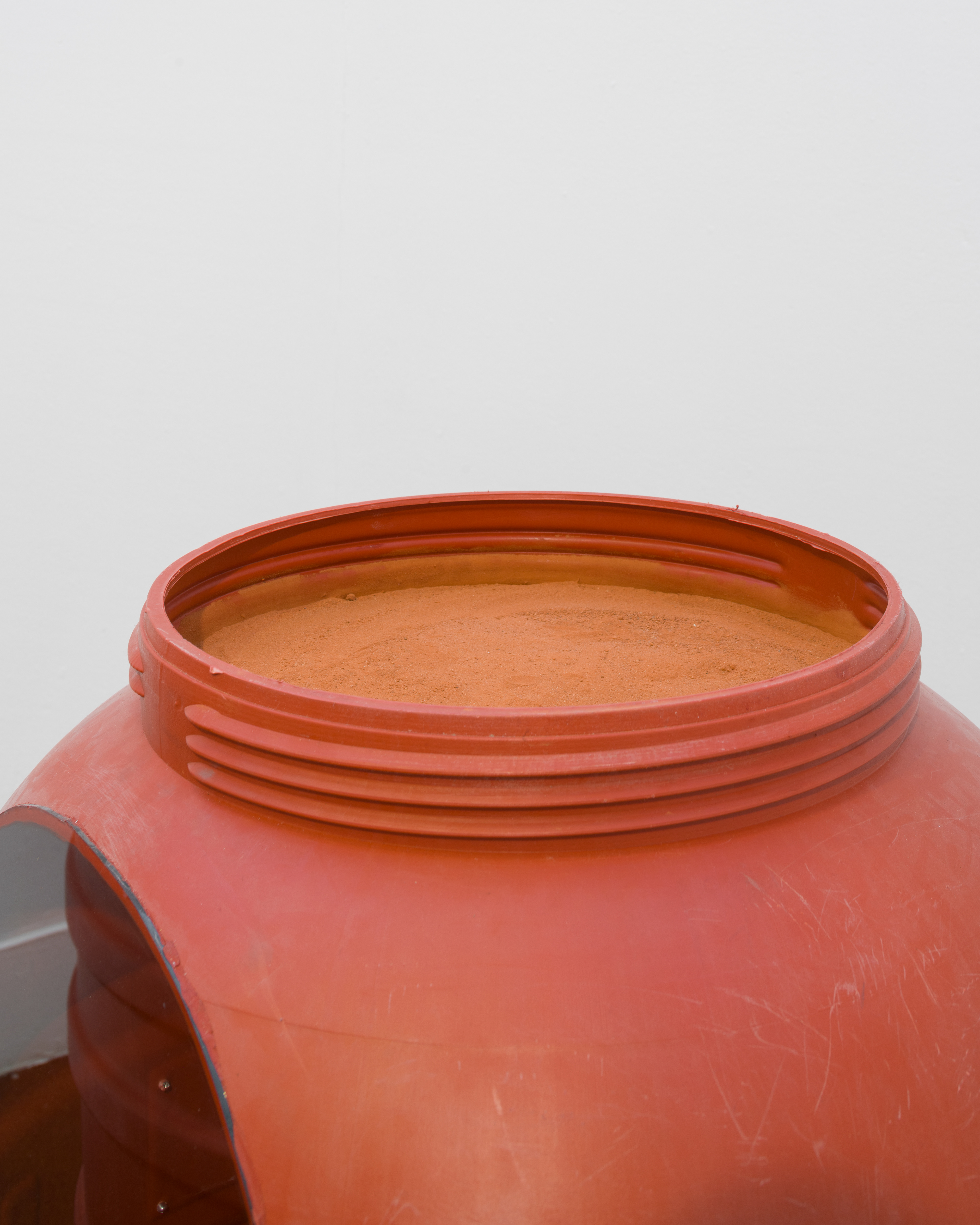
©Maxime Bagni - 📷 Arthur Crestani
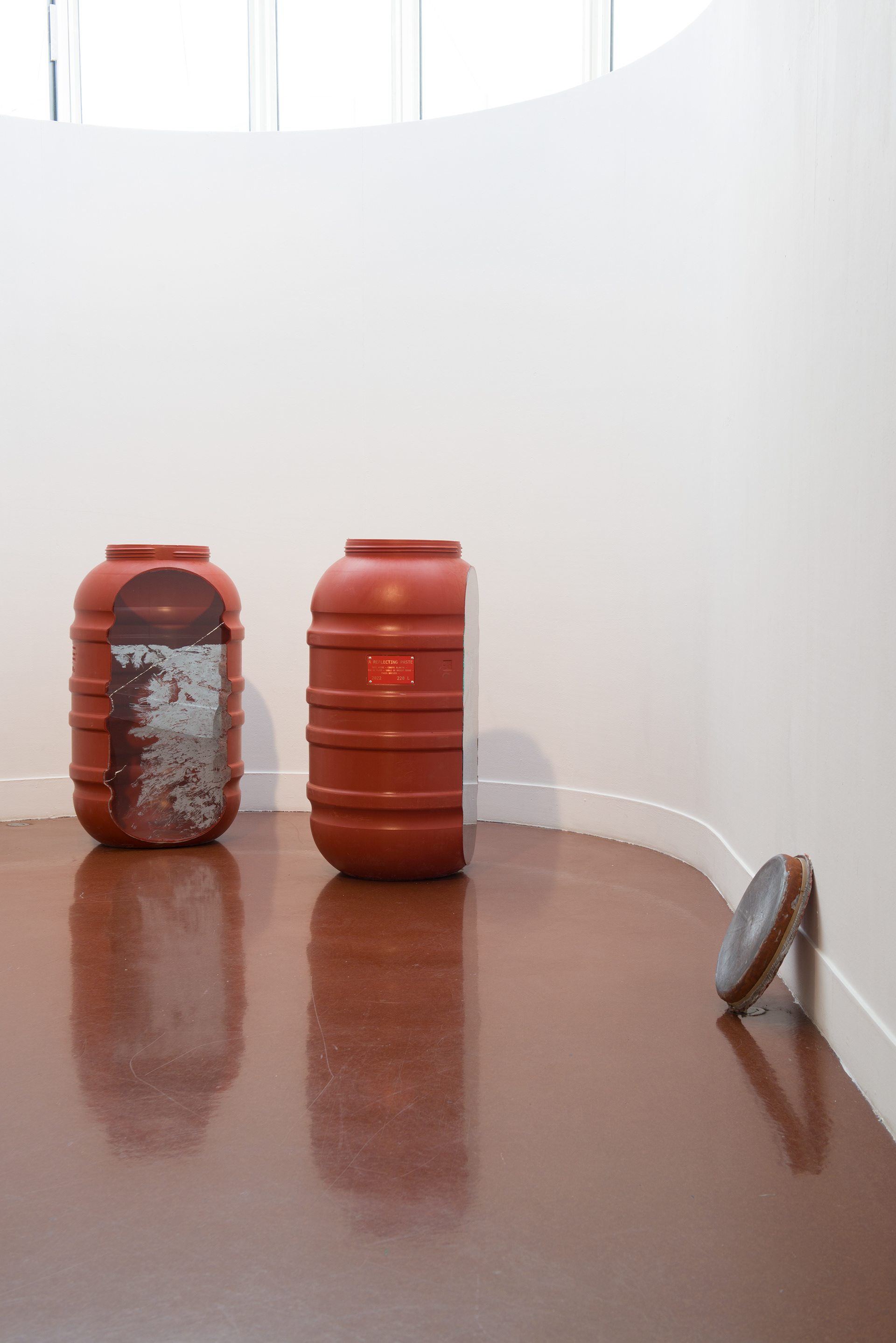
©Maxime Bagni - 📷 Arthur Crestani
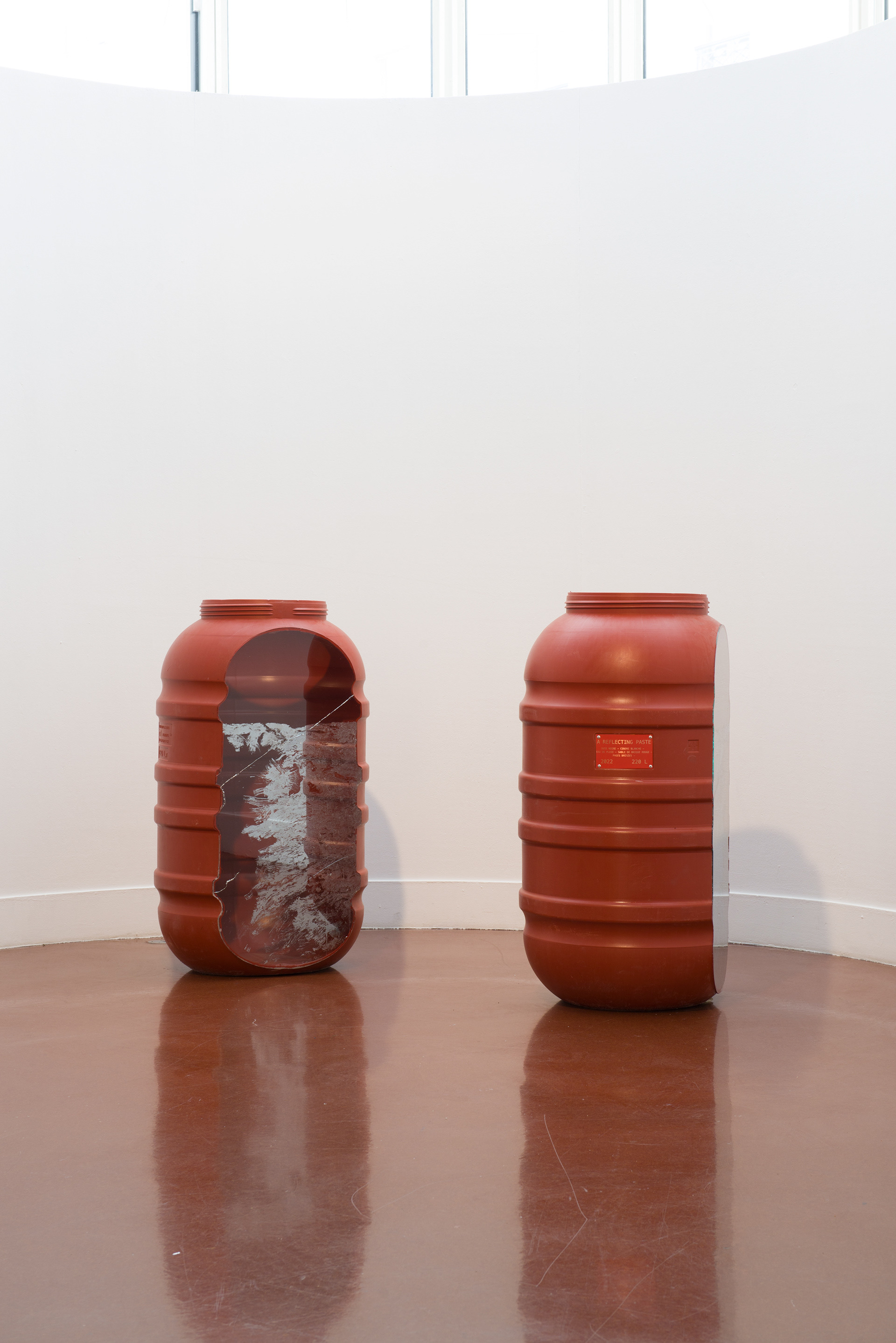
©Maxime Bagni - 📷 Arthur Crestani
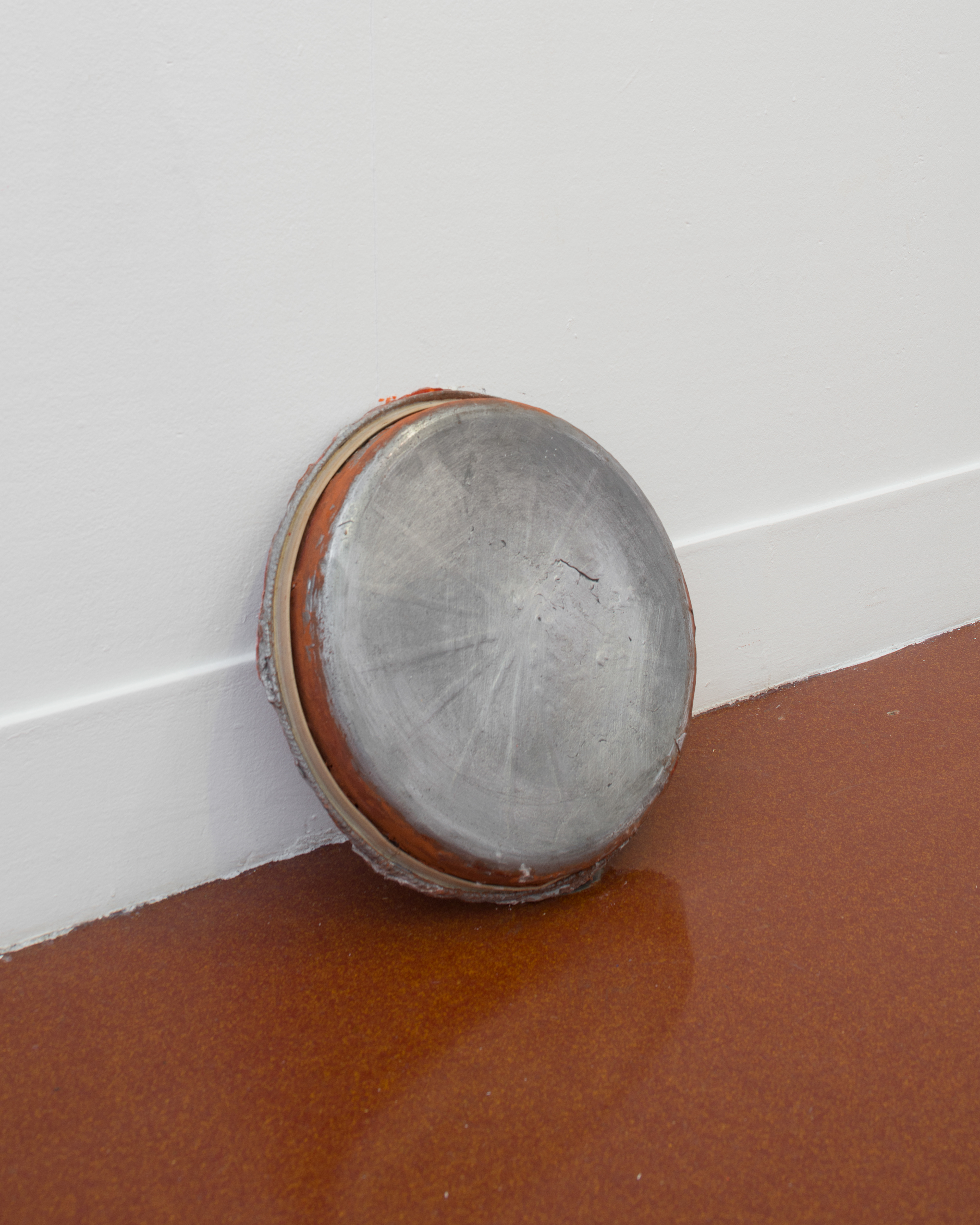
©Maxime Bagni - 📷 Arthur Crestani
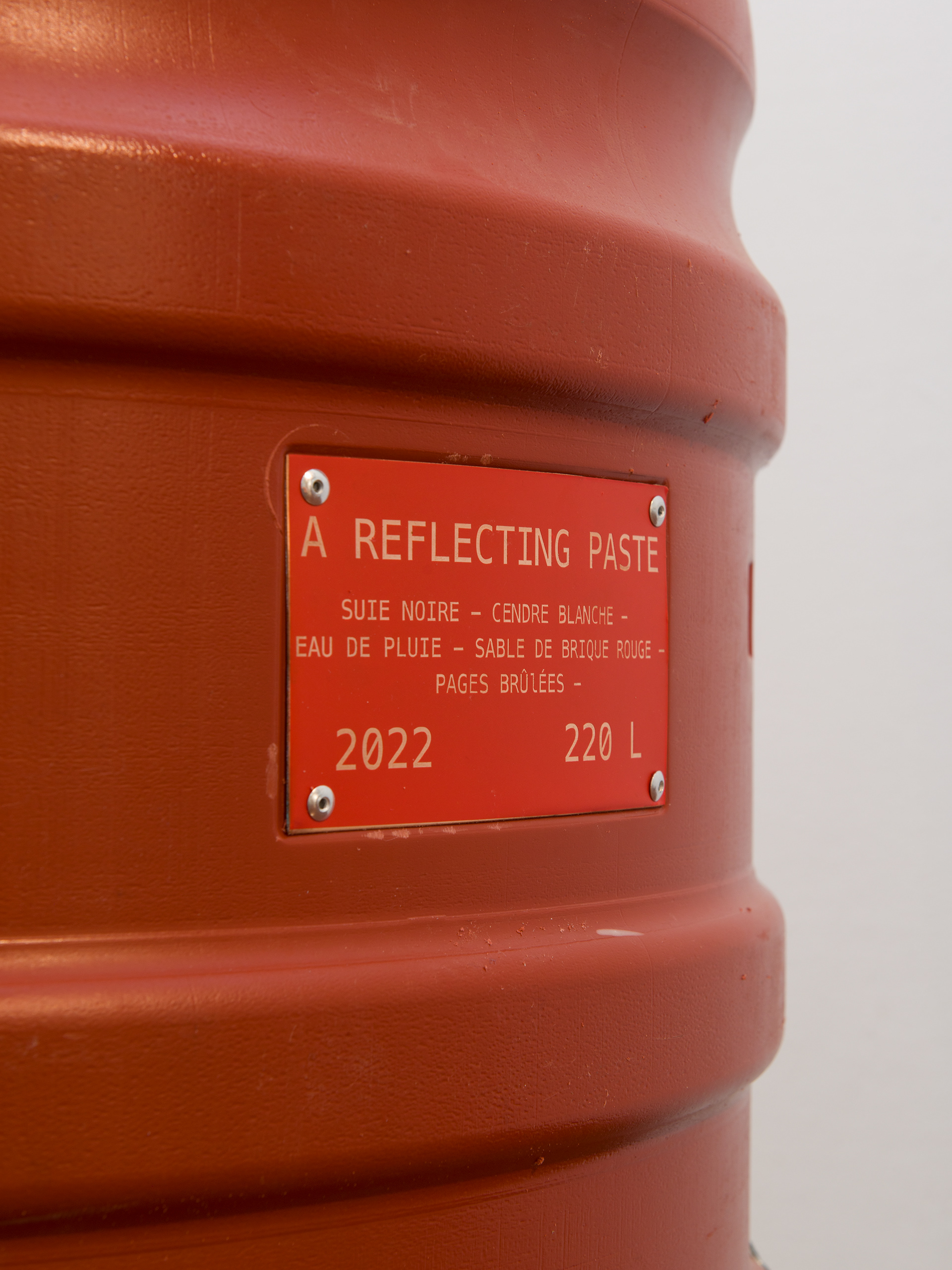
©Maxime Bagni - 📷 Arthur Crestani
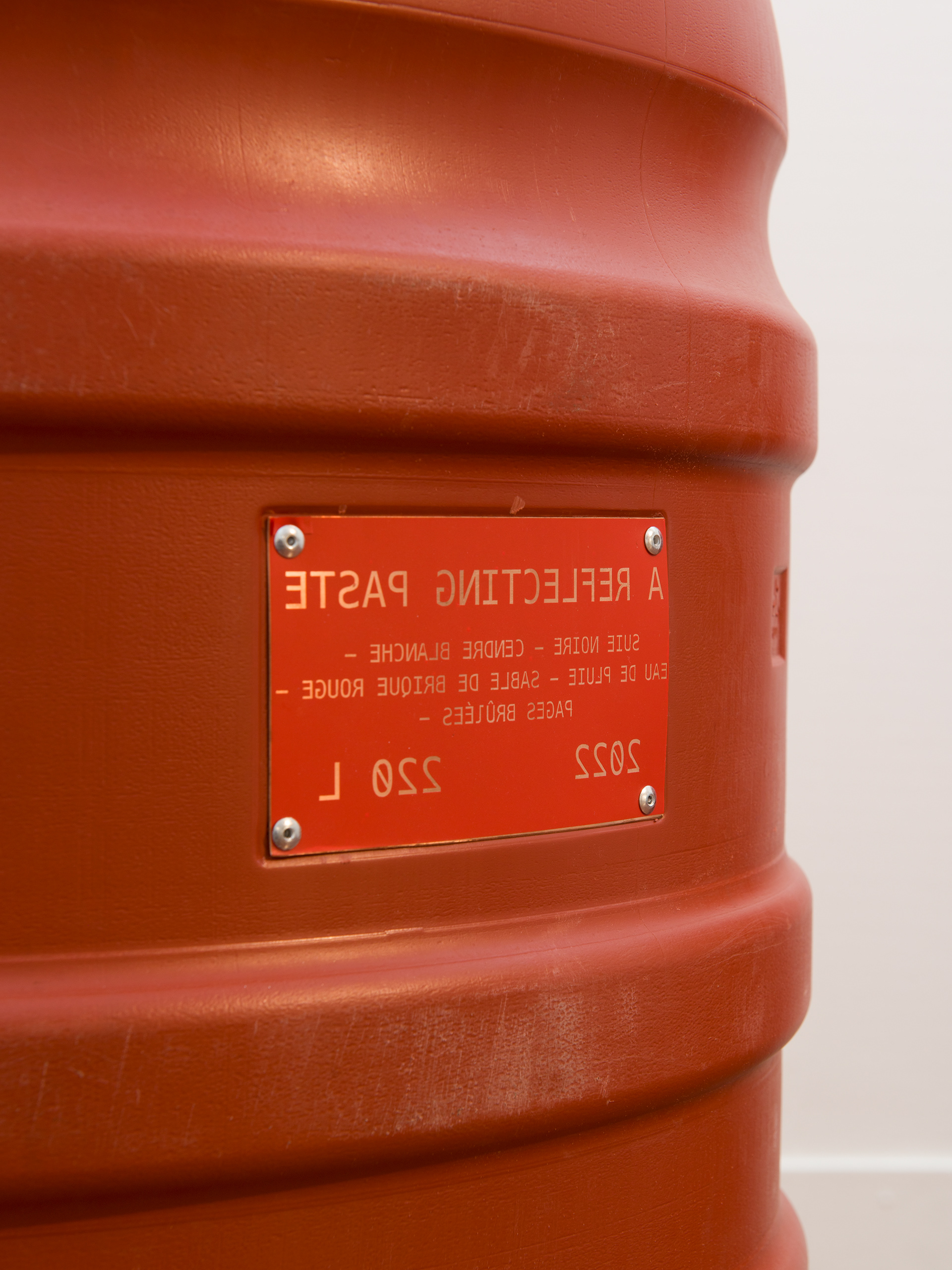
©Maxime Bagni - 📷 Arthur Crestani

©Maxime Bagni - 📷 Arthur Crestani

©Maxime Bagni - 📷 Arthur Crestani
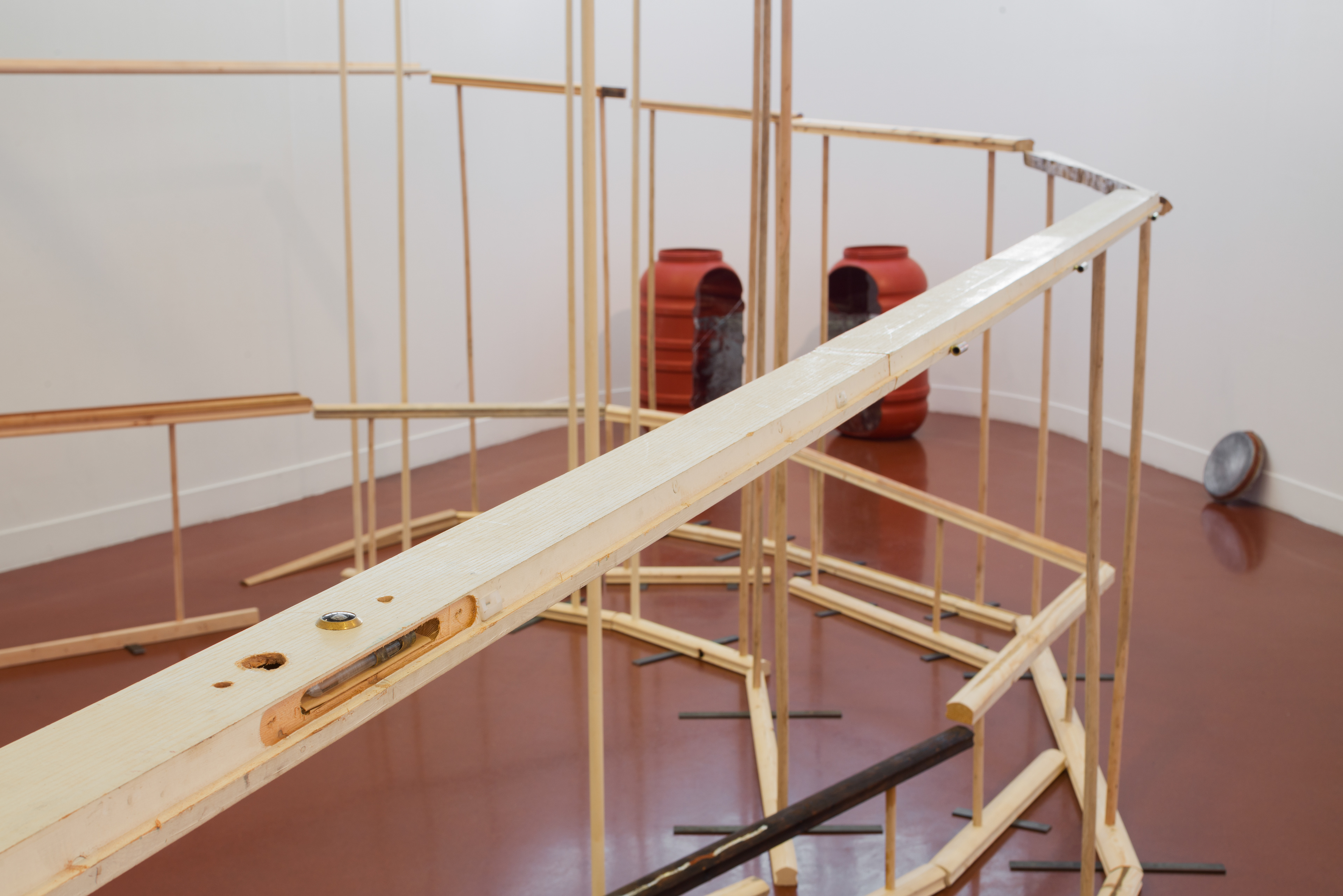
©Maxime Bagni - 📷 Arthur Crestani
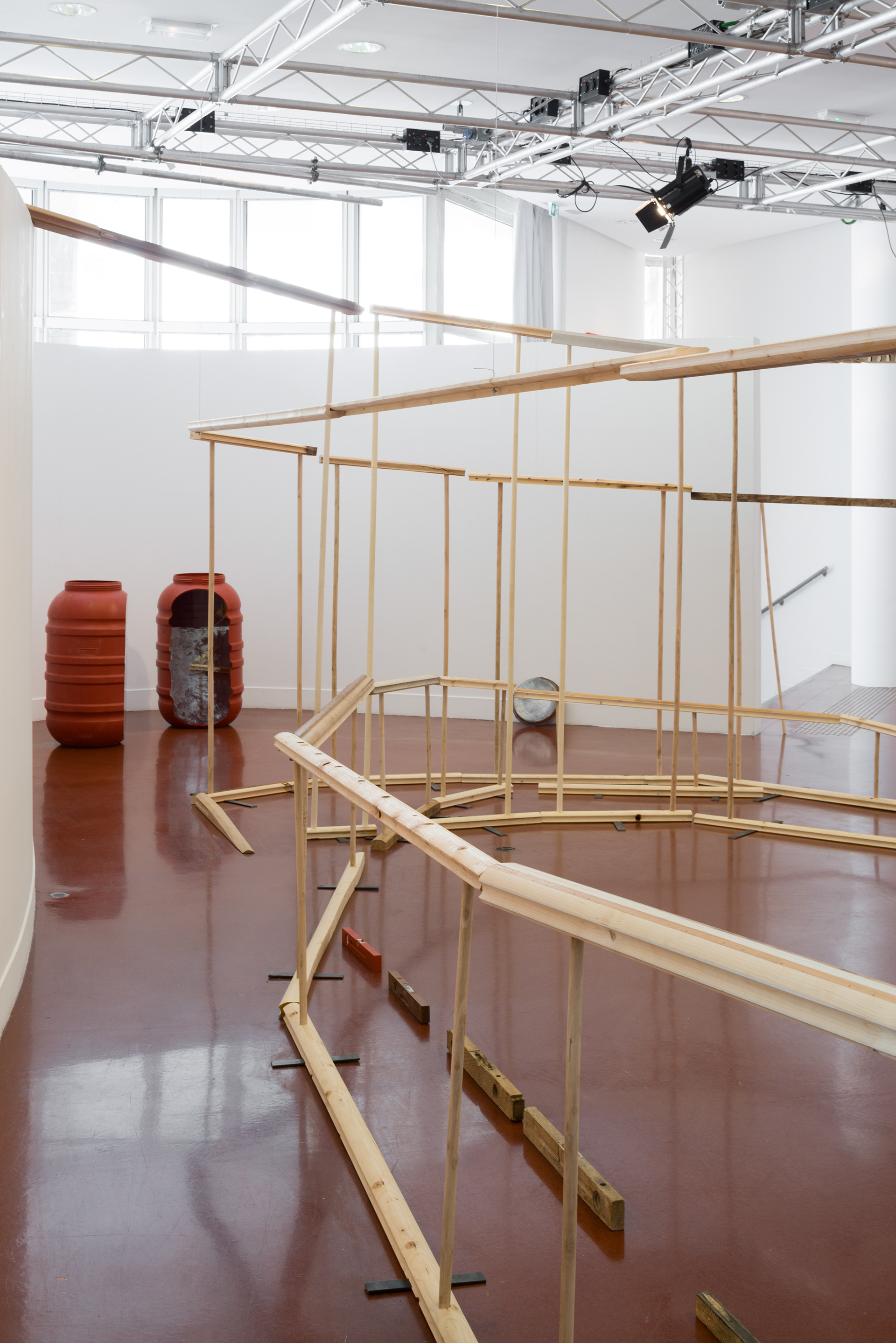
©Maxime Bagni - 📷 Arthur Crestani
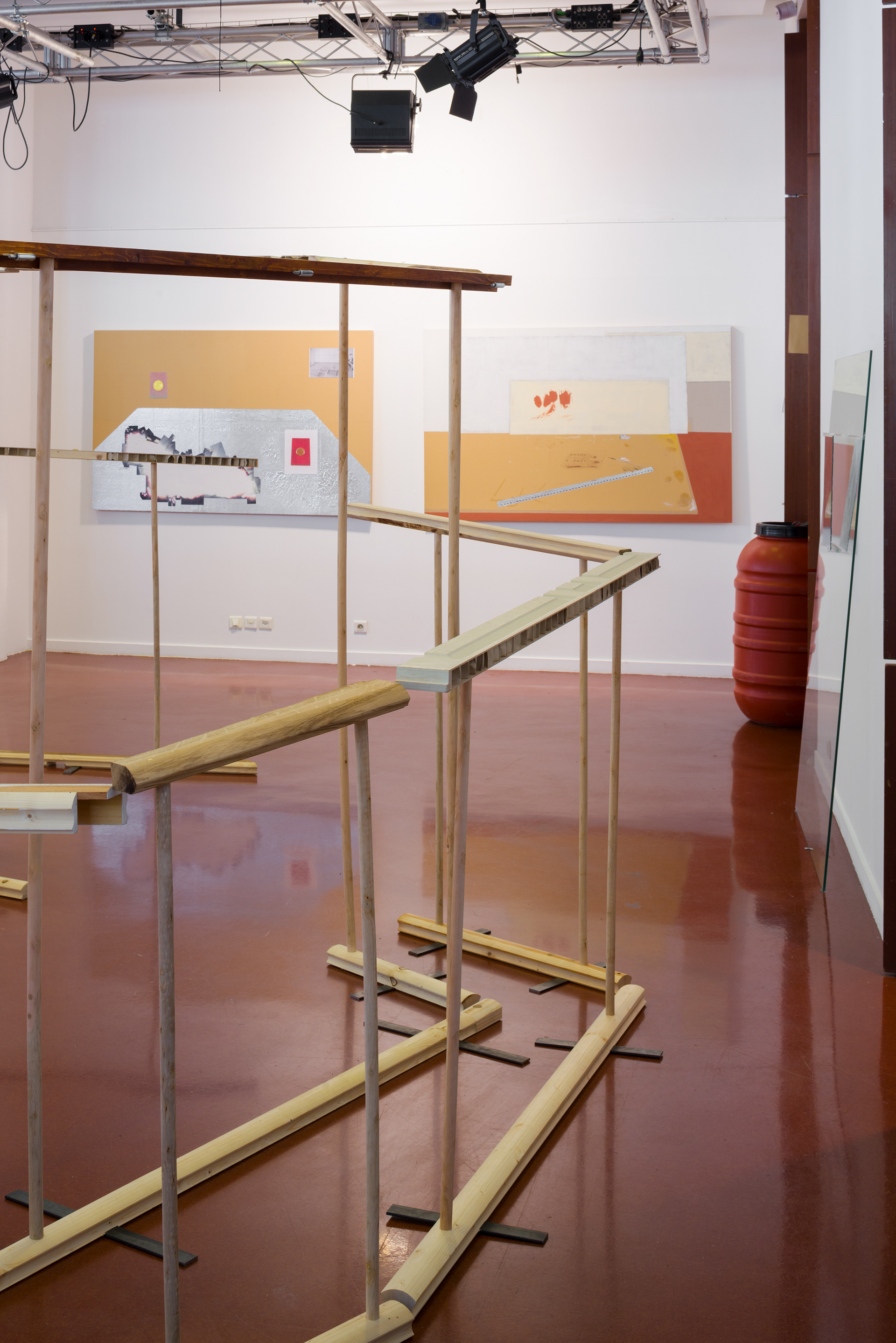
©Maxime Bagni - 📷 Arthur Crestani
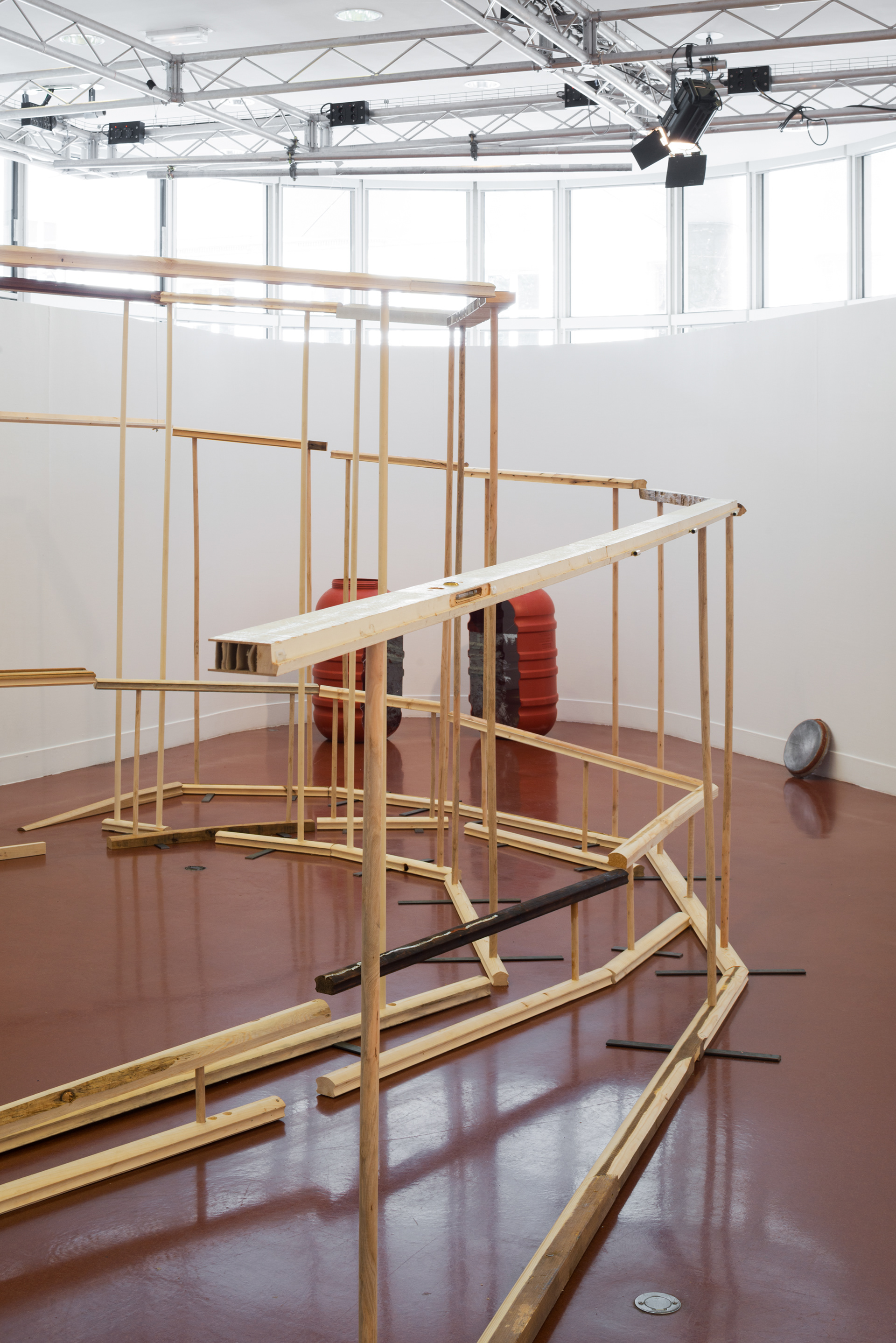
©Maxime Bagni - 📷 Arthur Crestani

©Maxime Bagni - 📷 Arthur Crestani
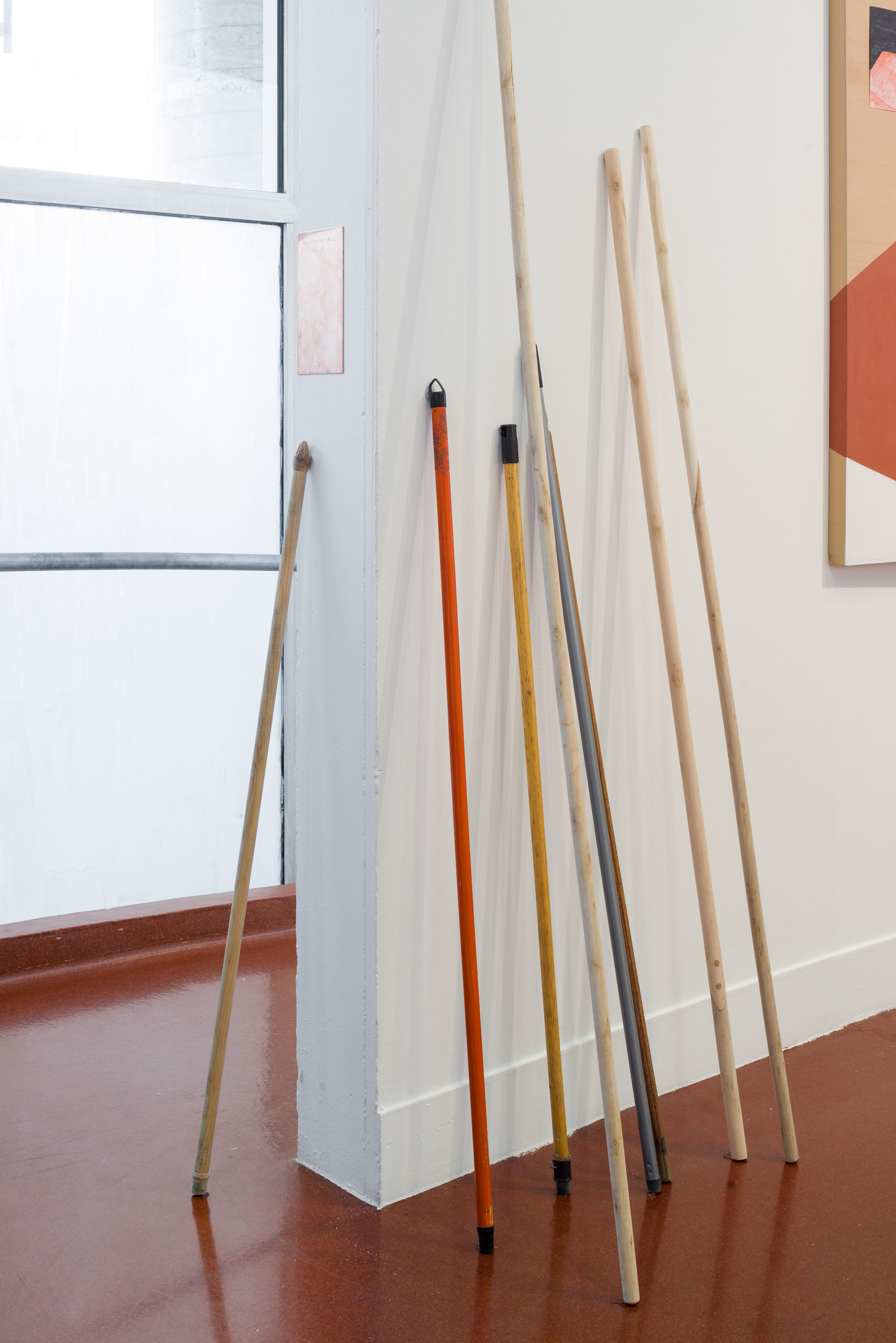
©Maxime Bagni - 📷 Arthur Crestani
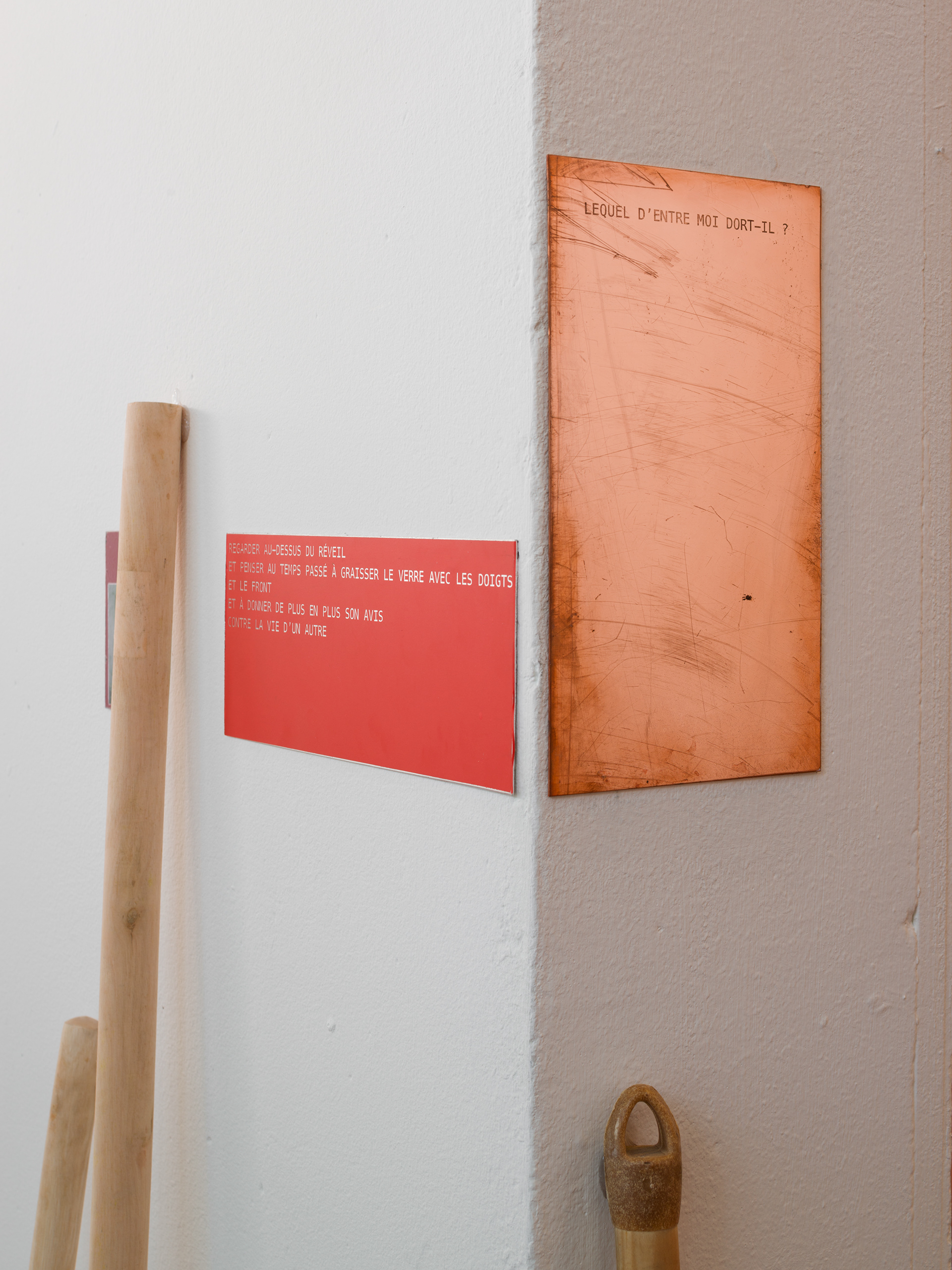
©Maxime Bagni - 📷 Arthur Crestani
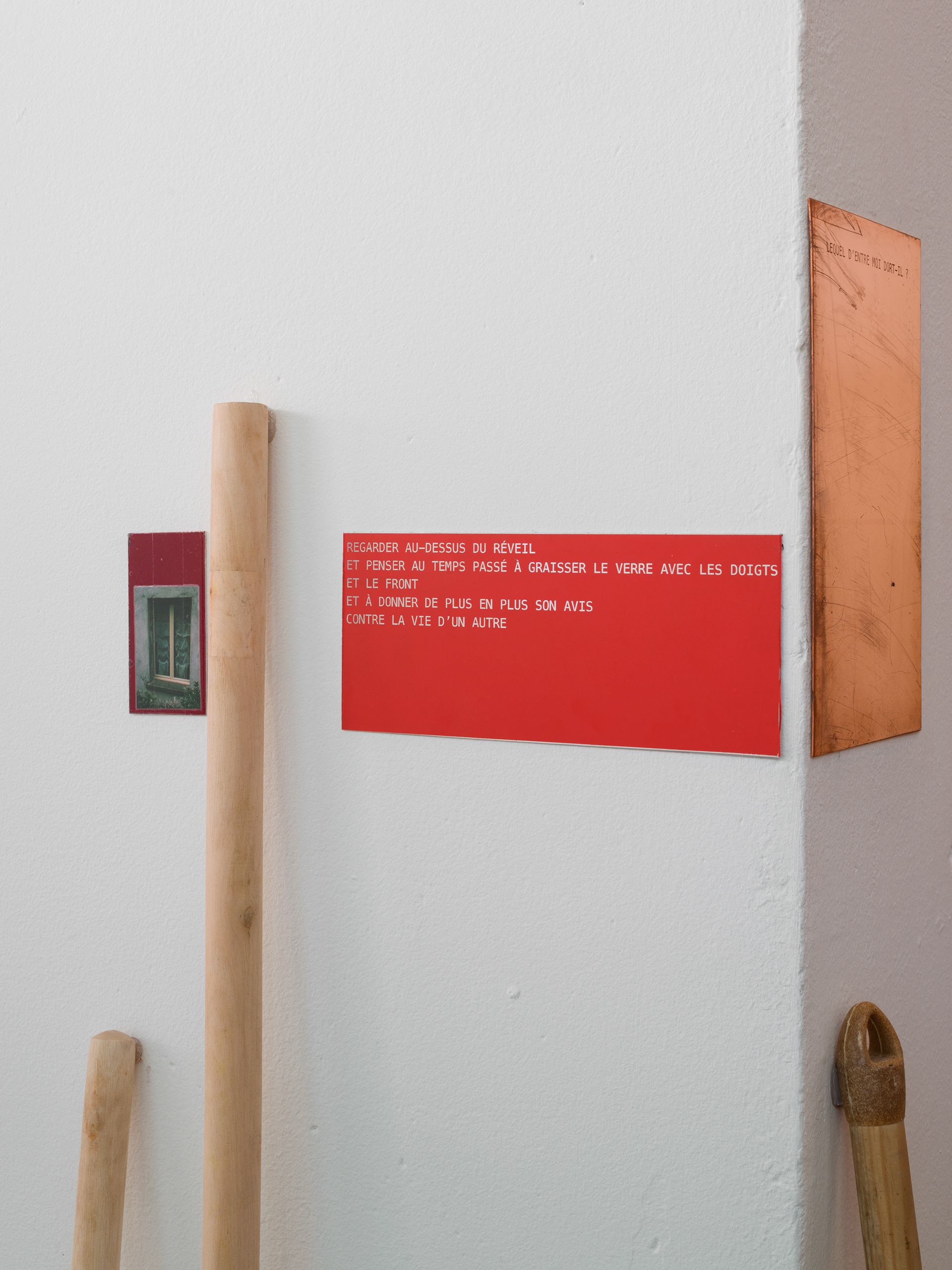
©Maxime Bagni - 📷 Arthur Crestani
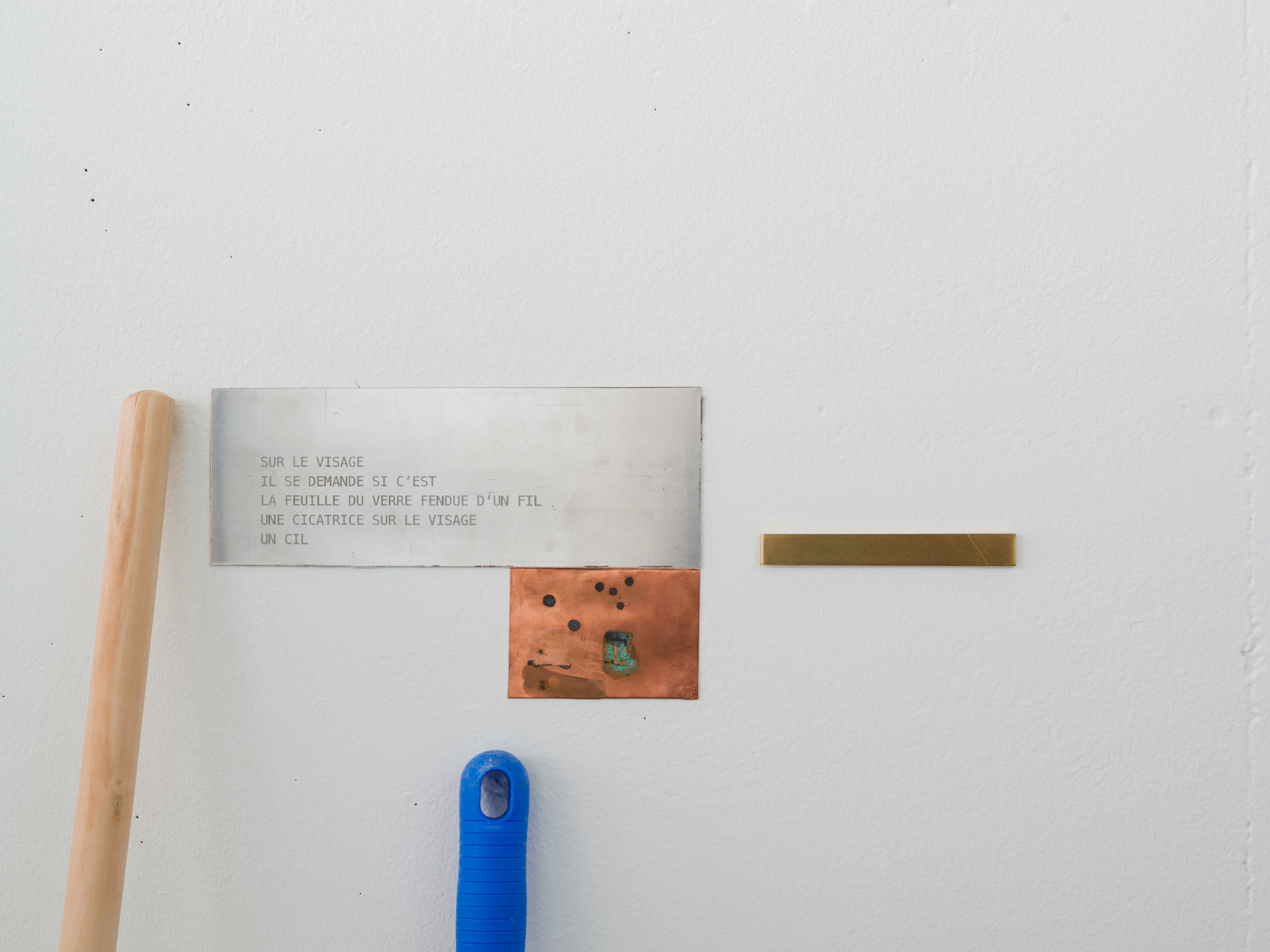
©Maxime Bagni - 📷 Arthur Crestani
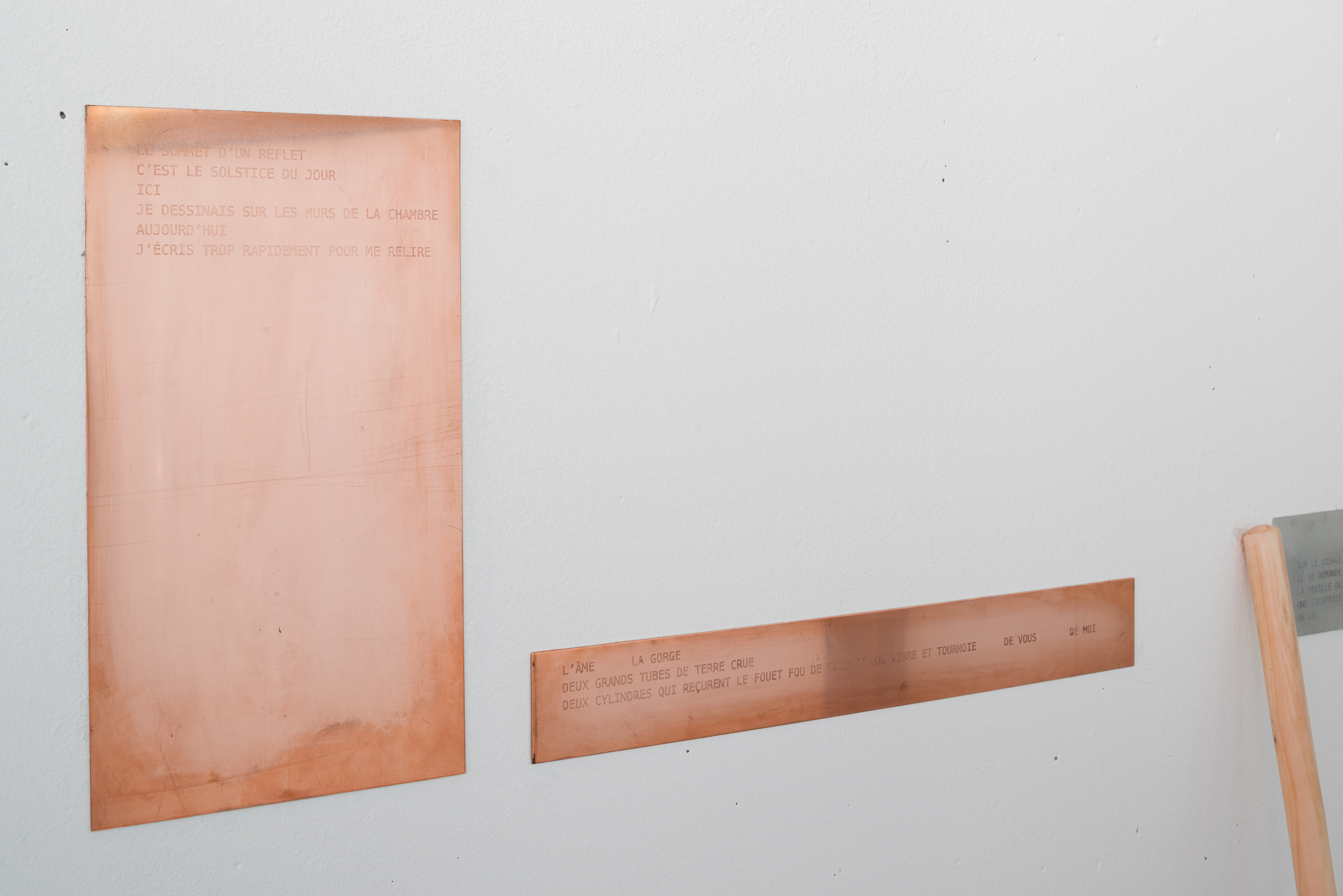
©Maxime Bagni - 📷 Arthur Crestani

©Maxime Bagni - 📷 Arthur Crestani
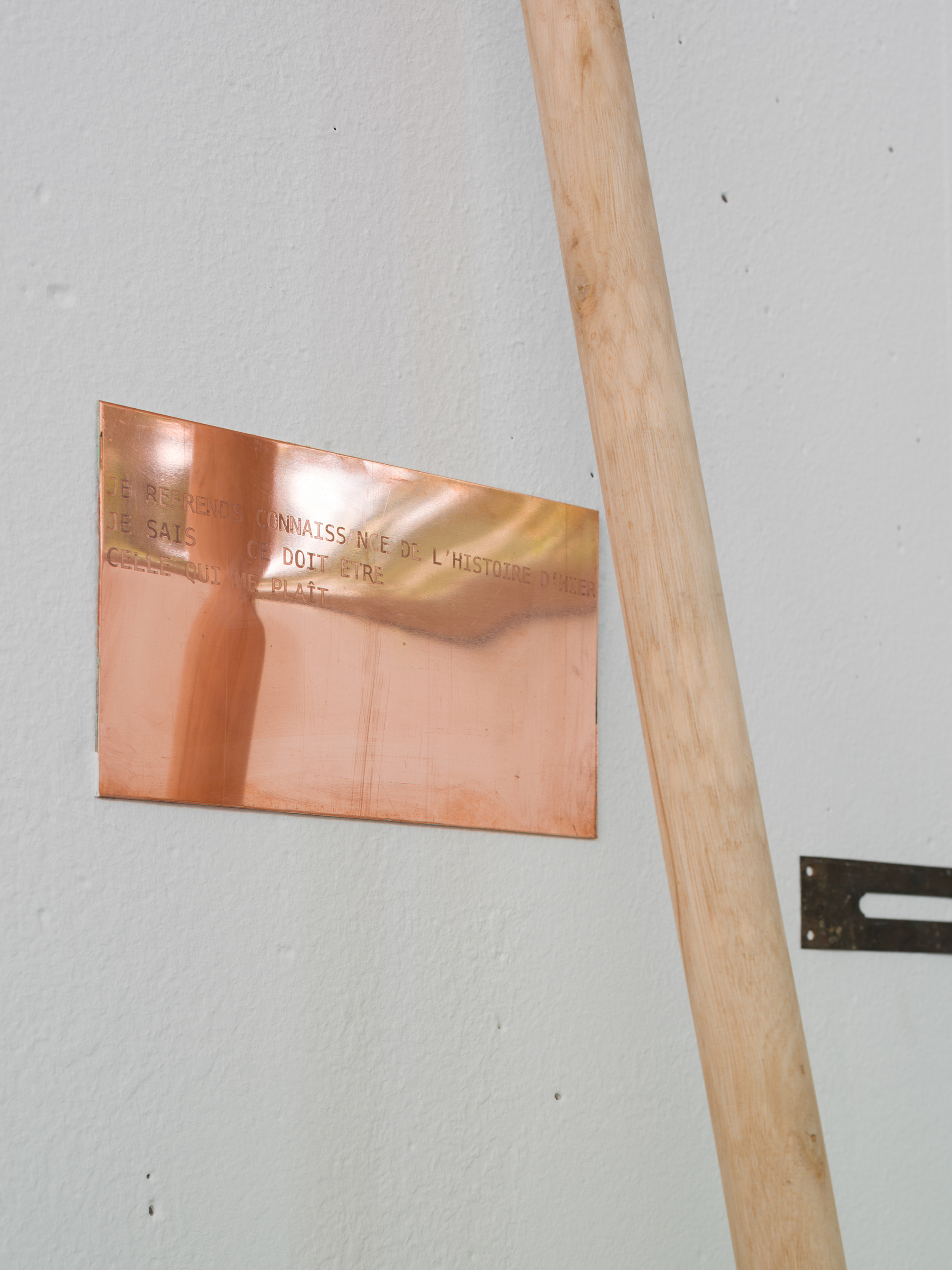
©Maxime Bagni - 📷 Arthur Crestani
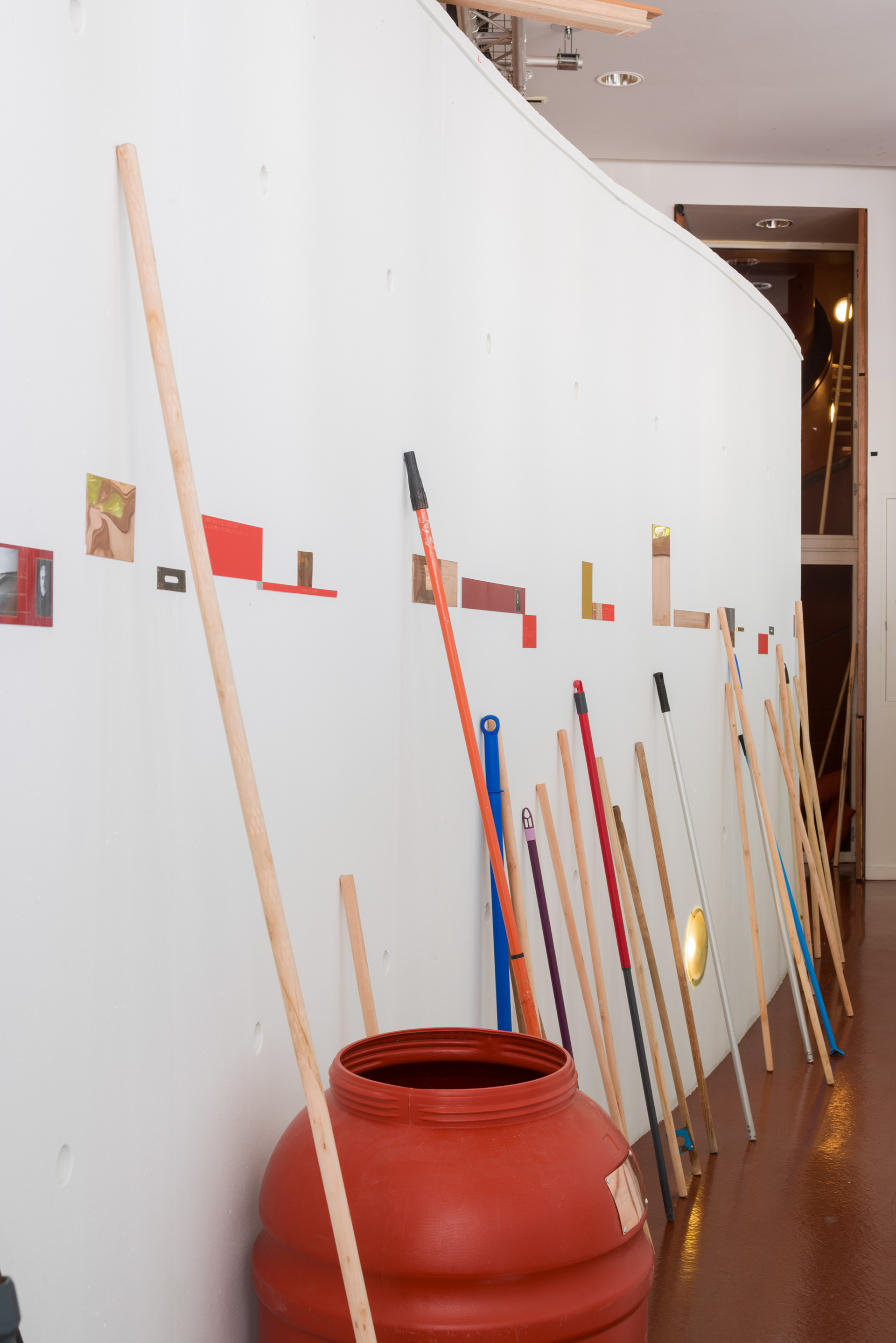
©Maxime Bagni - 📷 Arthur Crestani
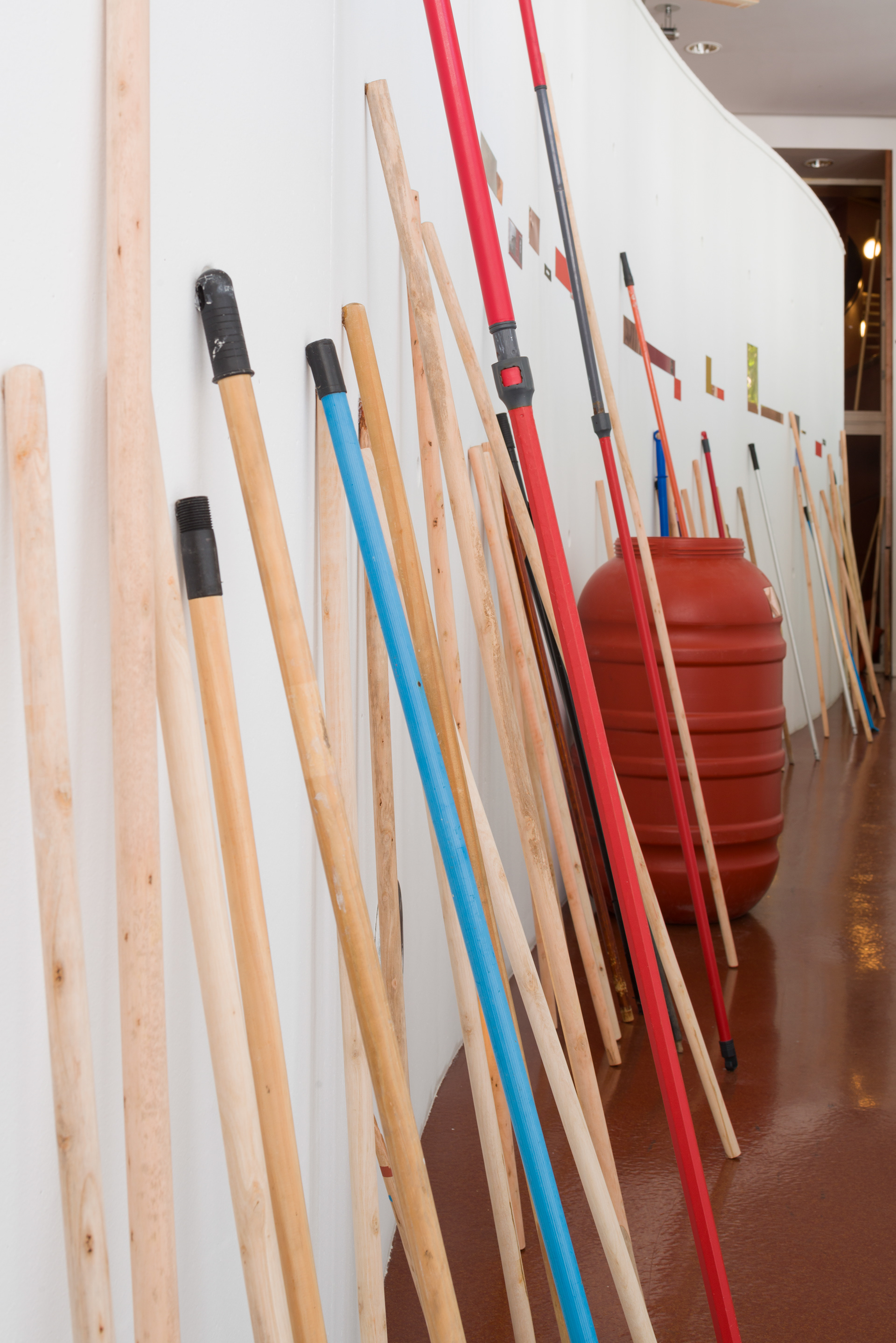
©Maxime Bagni - 📷 Arthur Crestani

©Maxime Bagni - 📷 Arthur Crestani
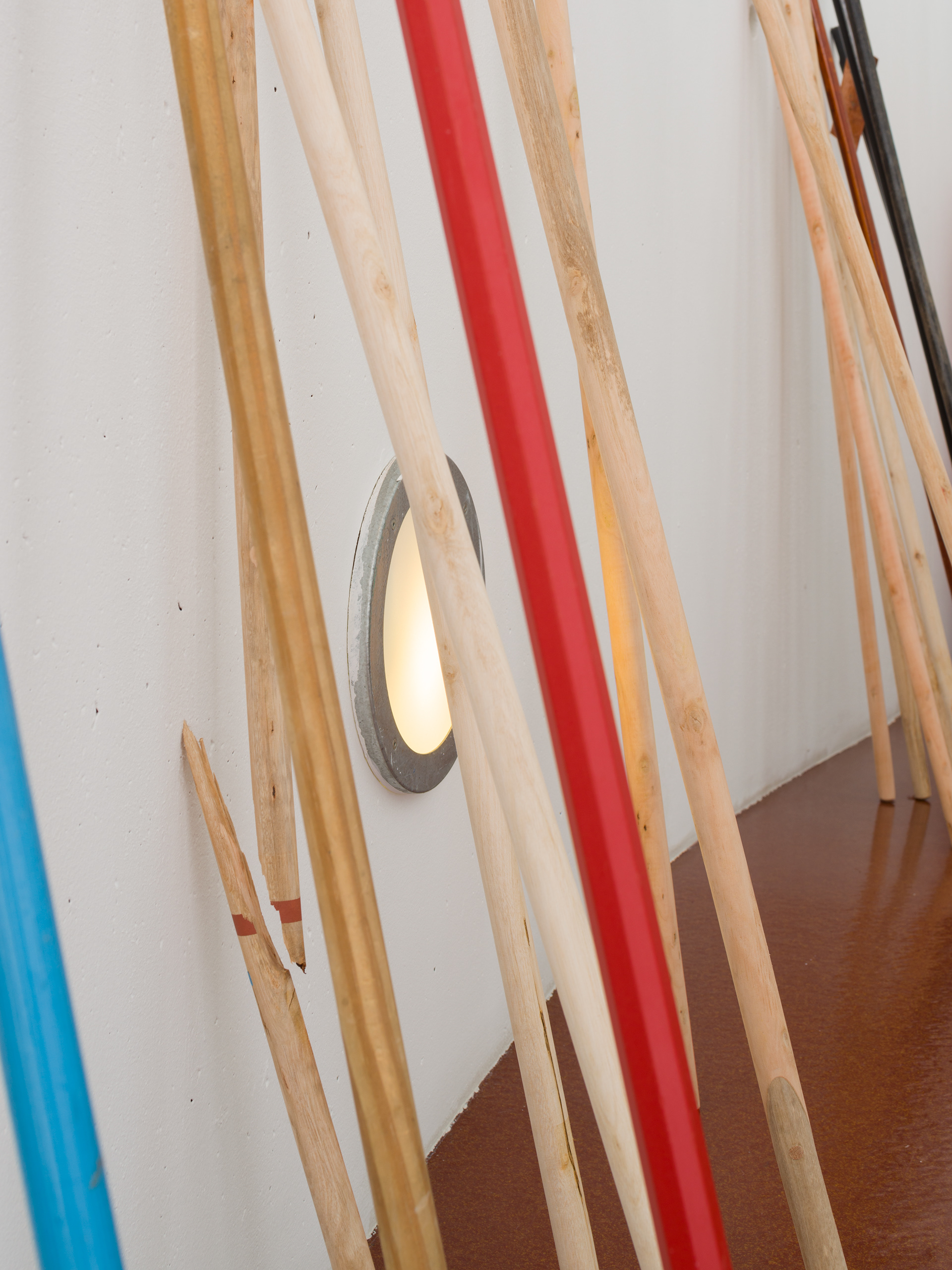
©Maxime Bagni - 📷 Arthur Crestani
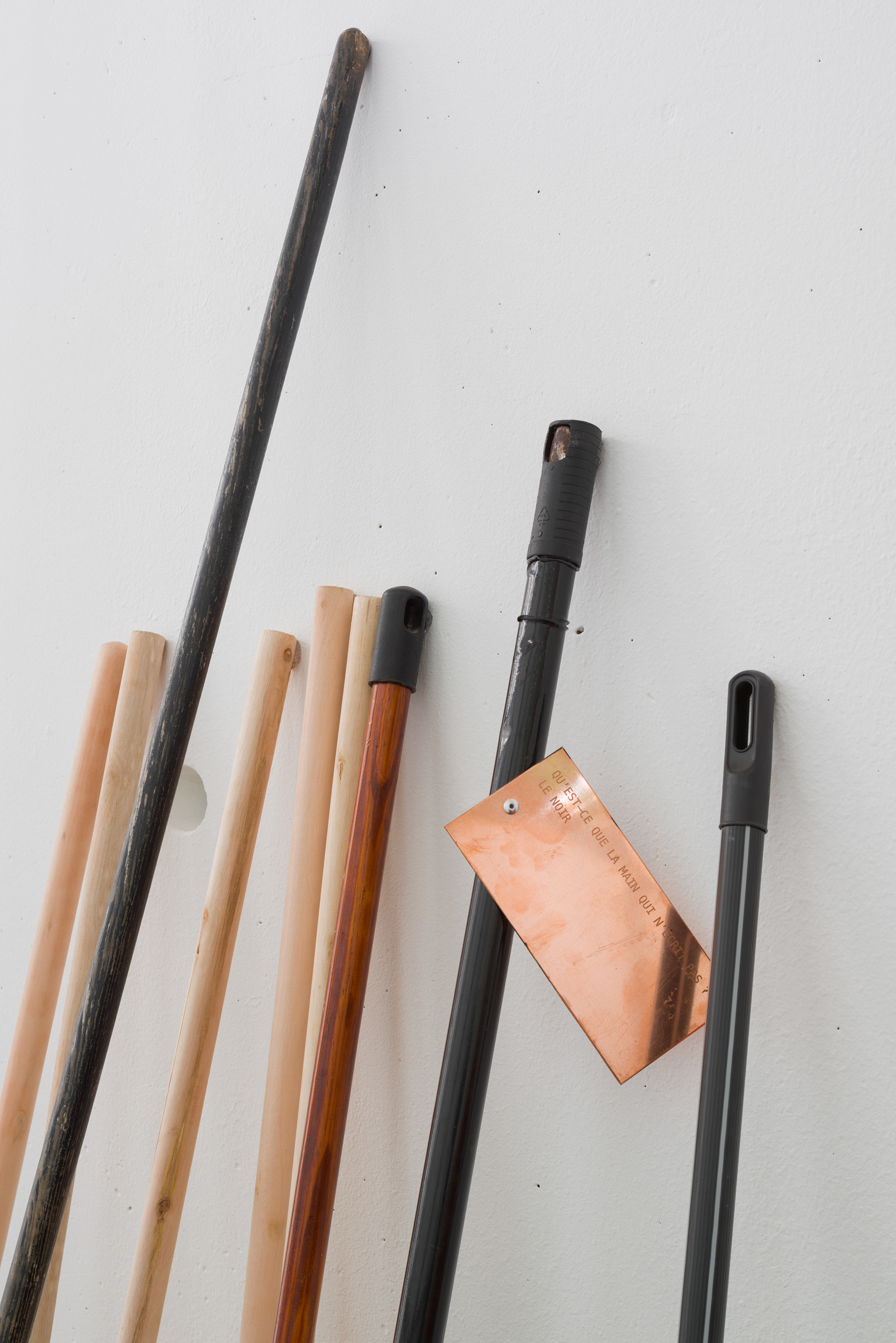
©Maxime Bagni - 📷 Arthur Crestani
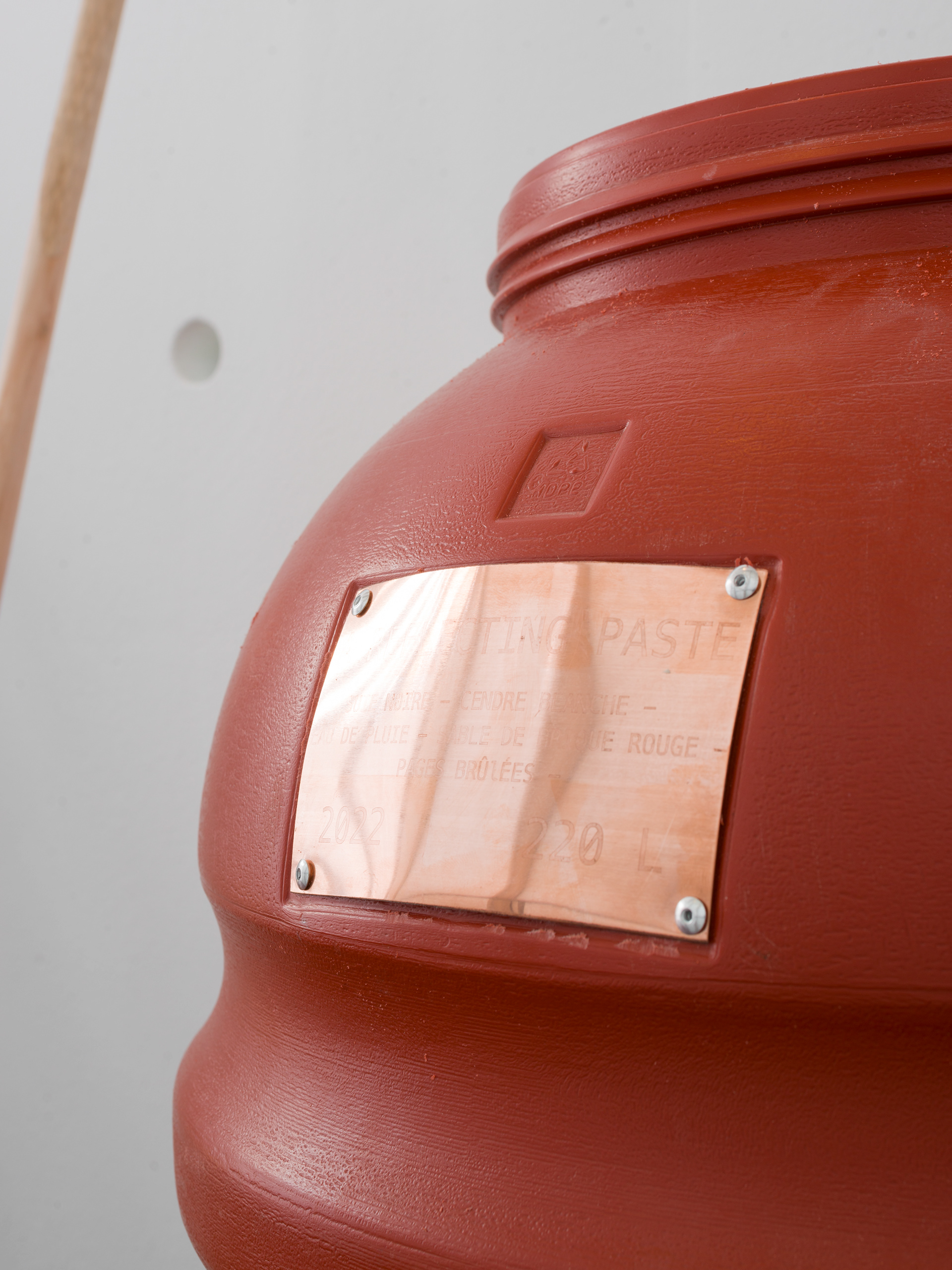
©Maxime Bagni - 📷 Arthur Crestani
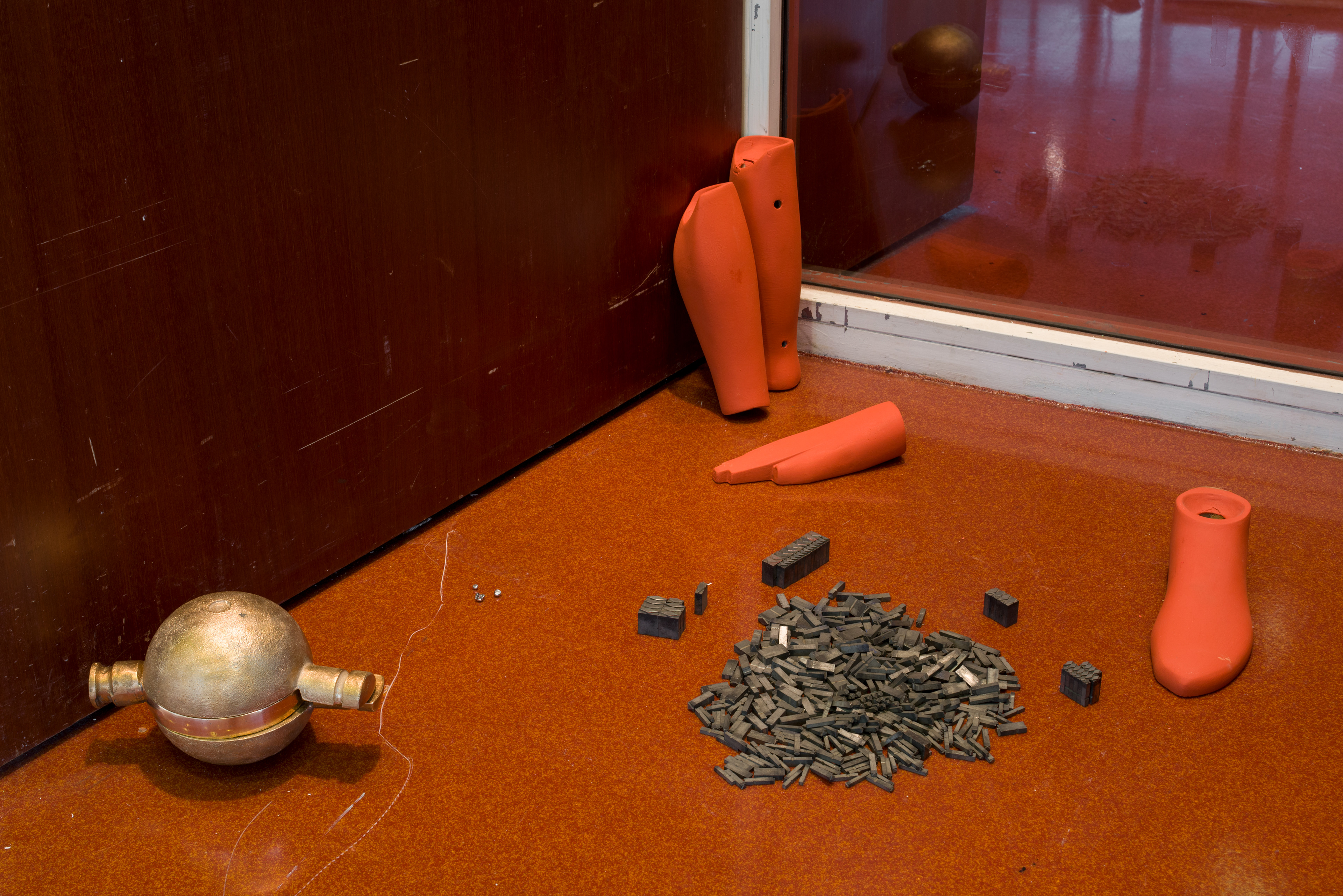
©Maxime Bagni - 📷 Arthur Crestani

©Maxime Bagni - 📷 Arthur Crestani
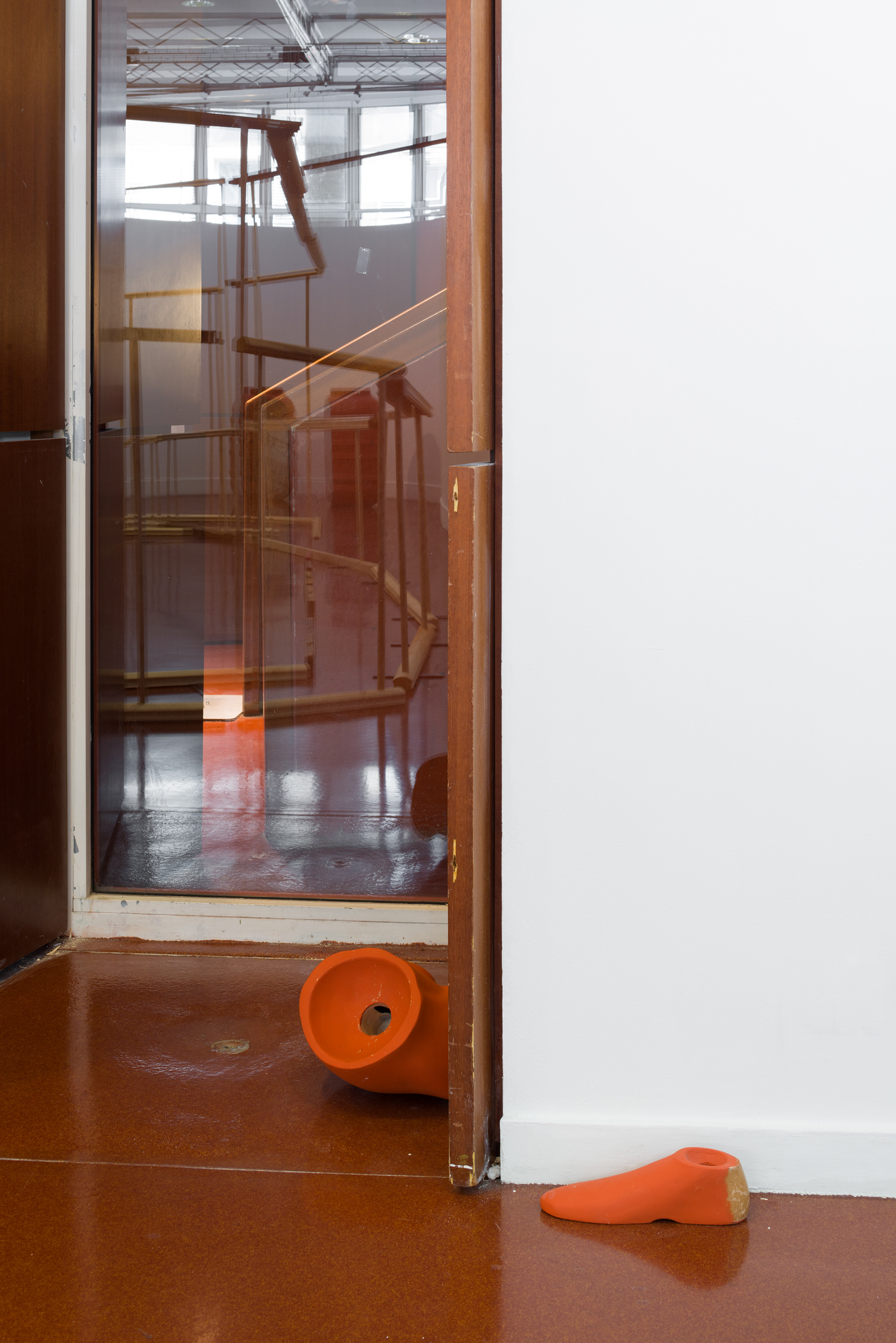
©Maxime Bagni - 📷 Arthur Crestani
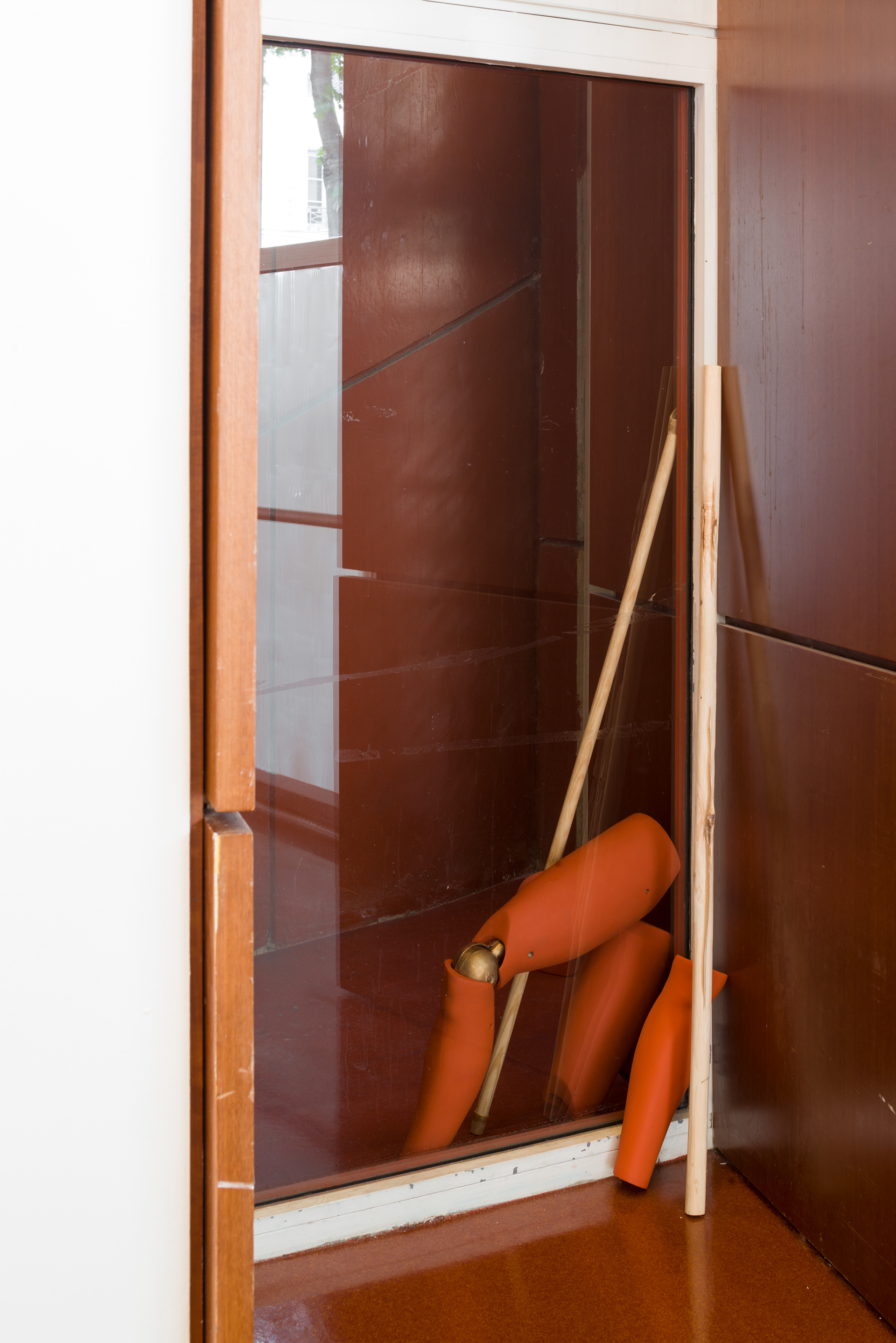
©Maxime Bagni - 📷 Arthur Crestani
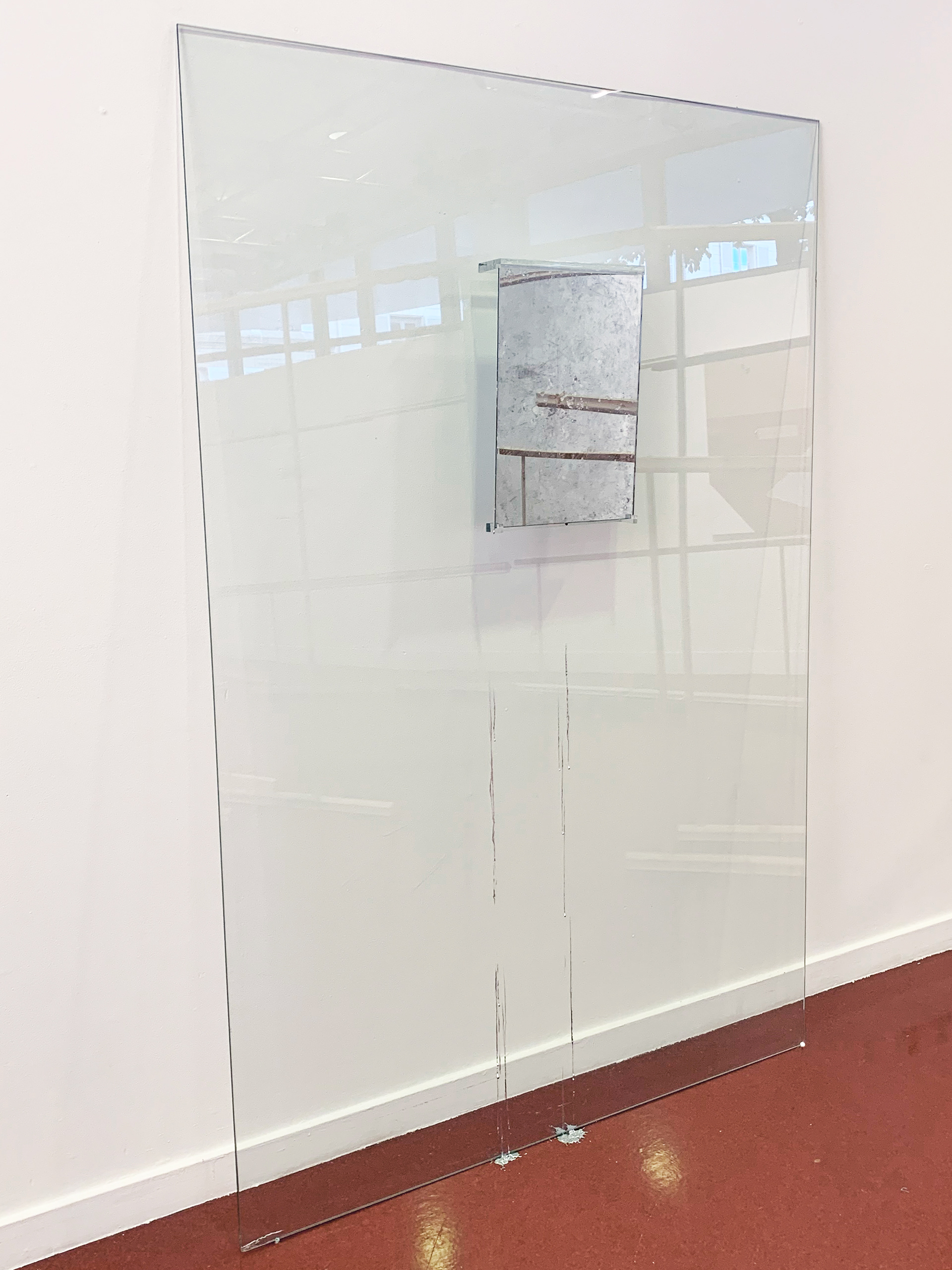
©Maxime Bagni - 📷 Pauline Defontgalland
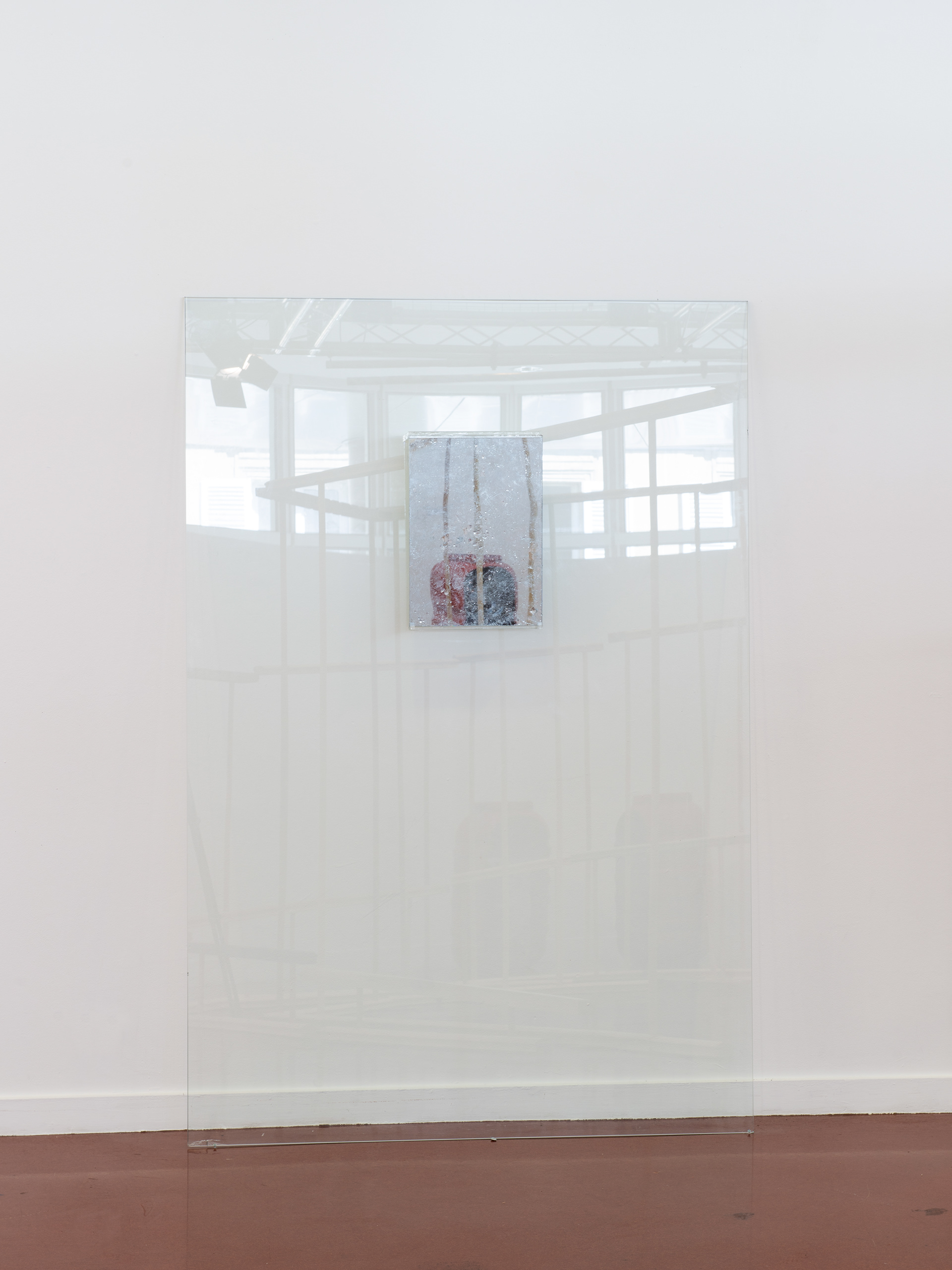
©Maxime Bagni - 📷 Arthur Crestani
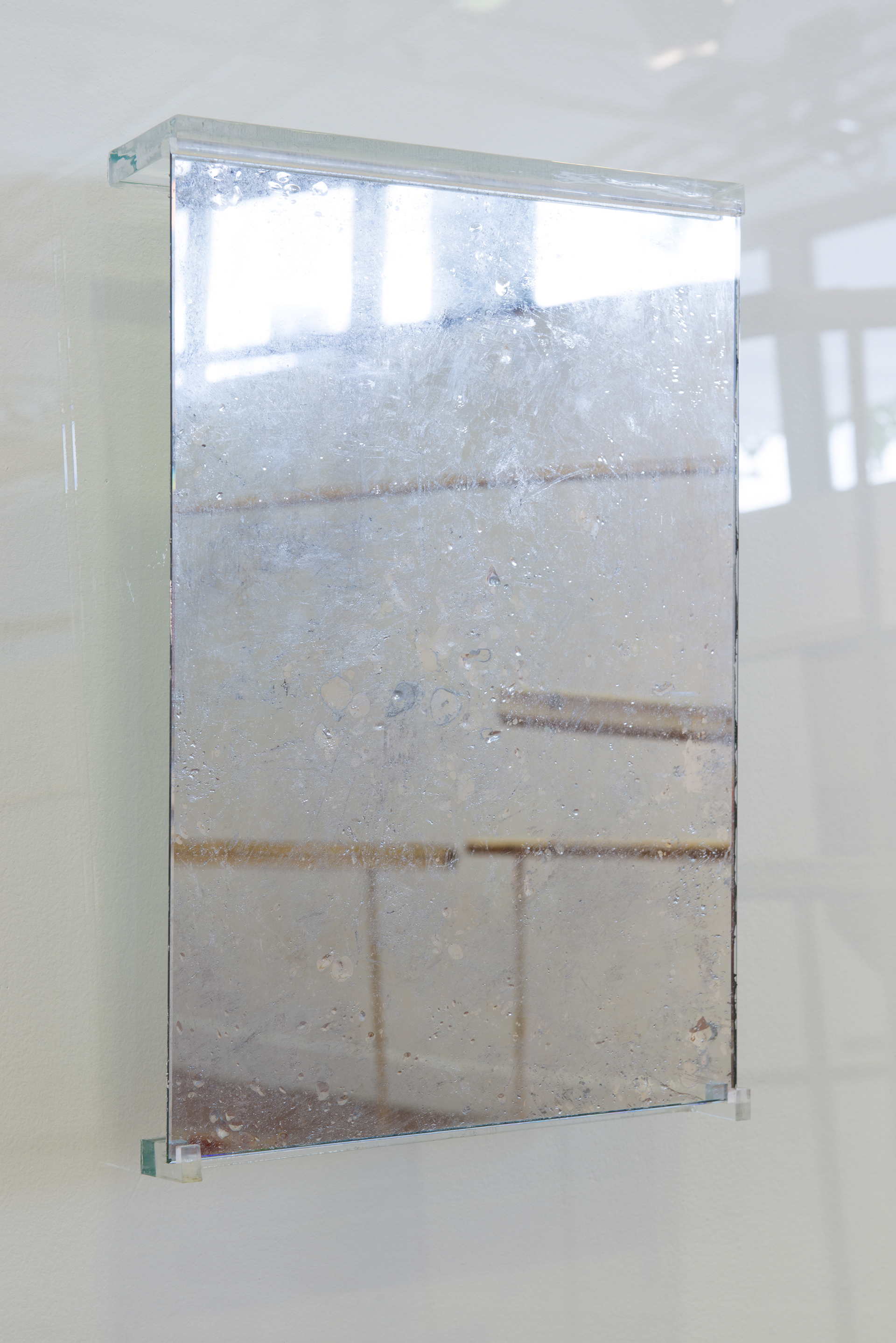
©Maxime Bagni - 📷 Arthur Crestani
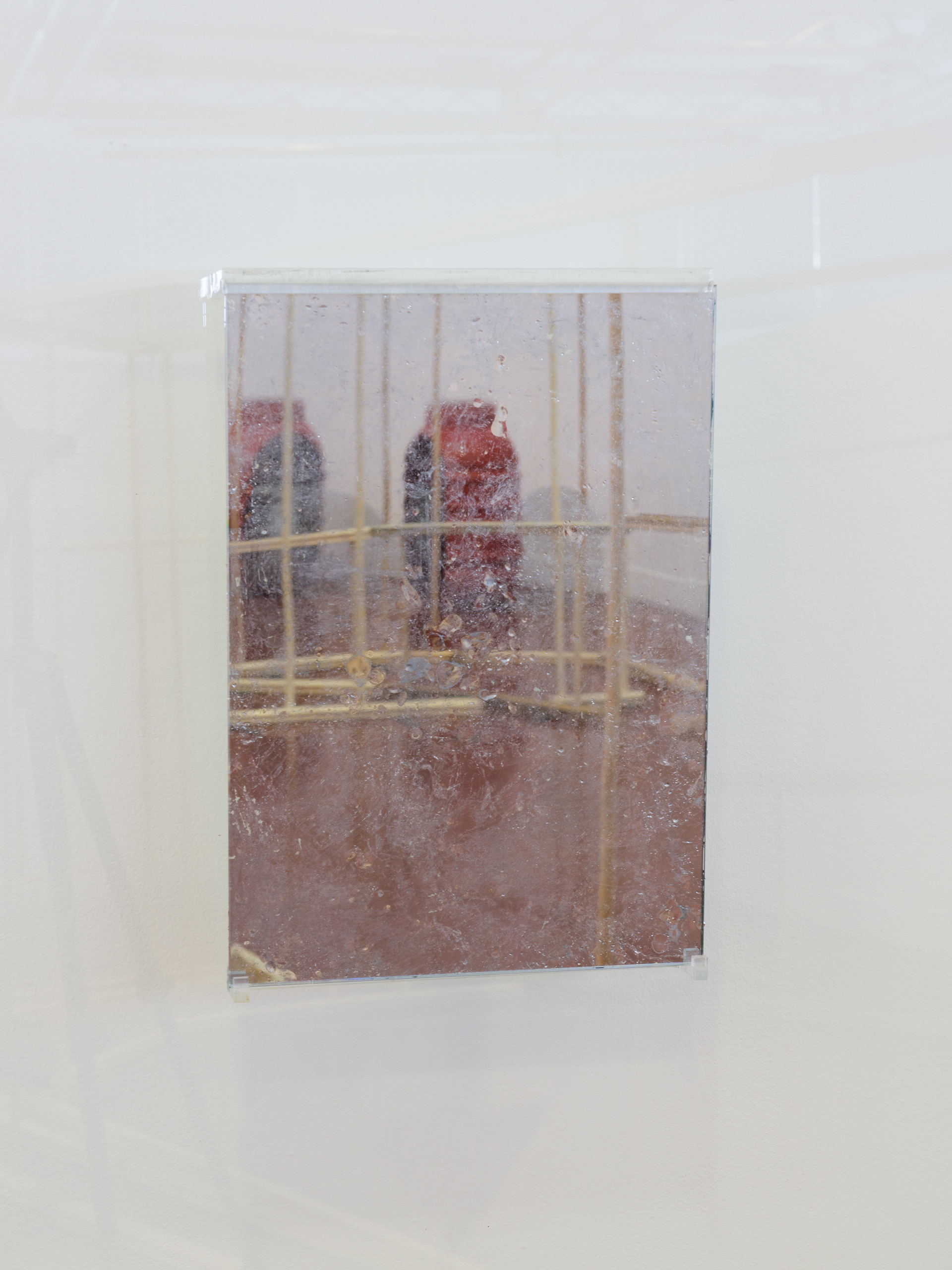
©Maxime Bagni - 📷 Arthur Crestani
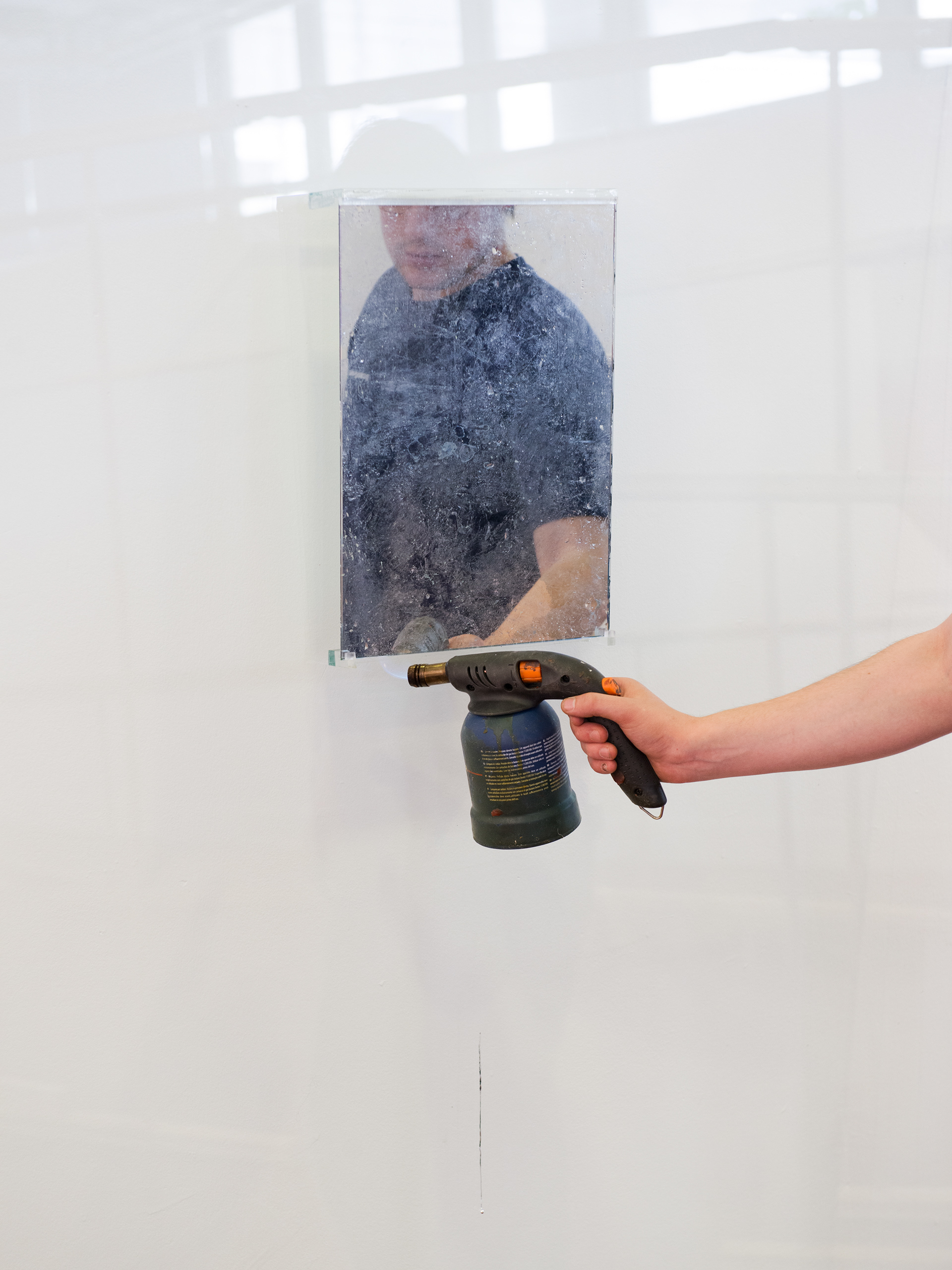
©Maxime Bagni - 📷 Arthur Crestani
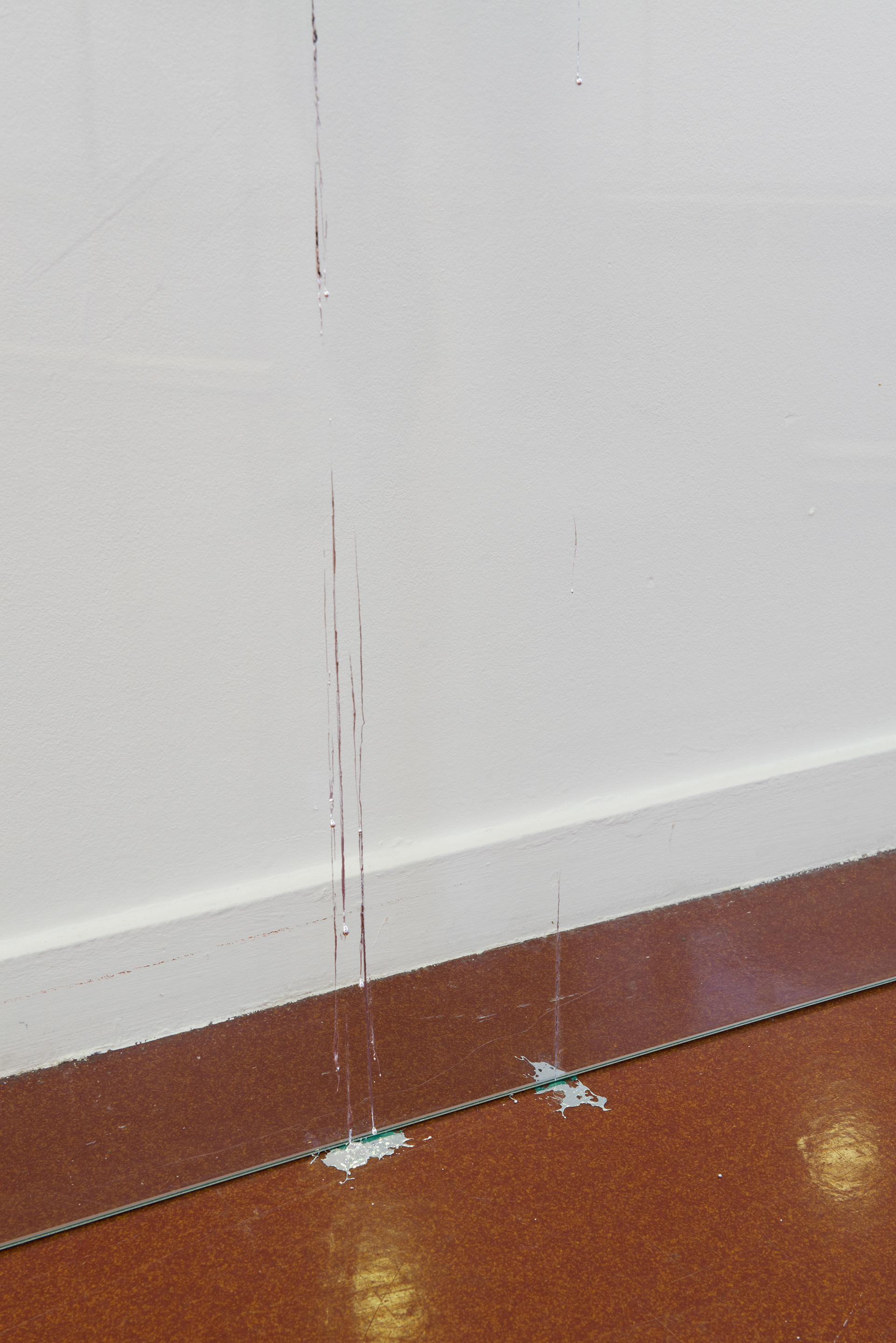
©Maxime Bagni - 📷 Arthur Crestani
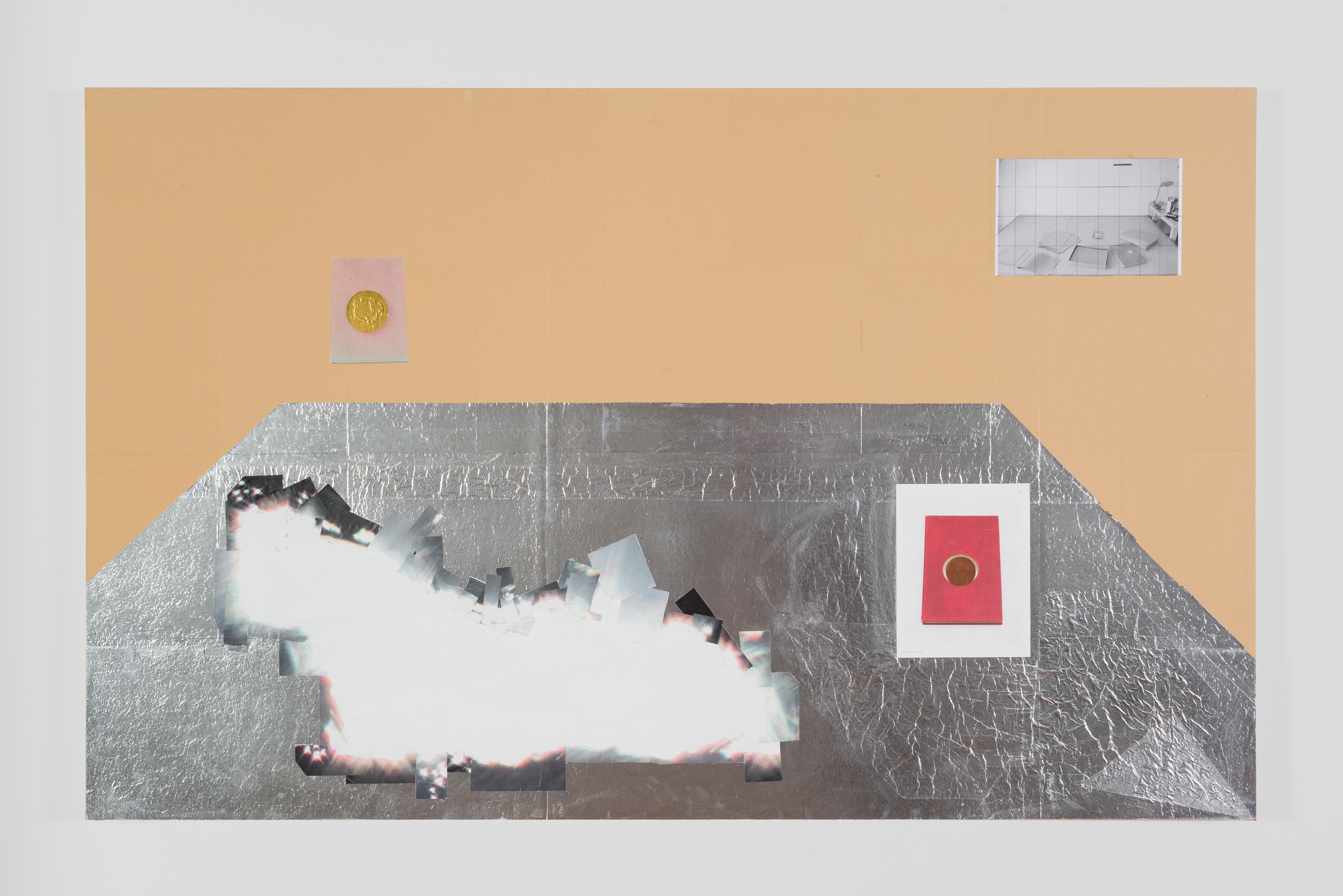
©Maxime Bagni - 📷 Arthur Crestani
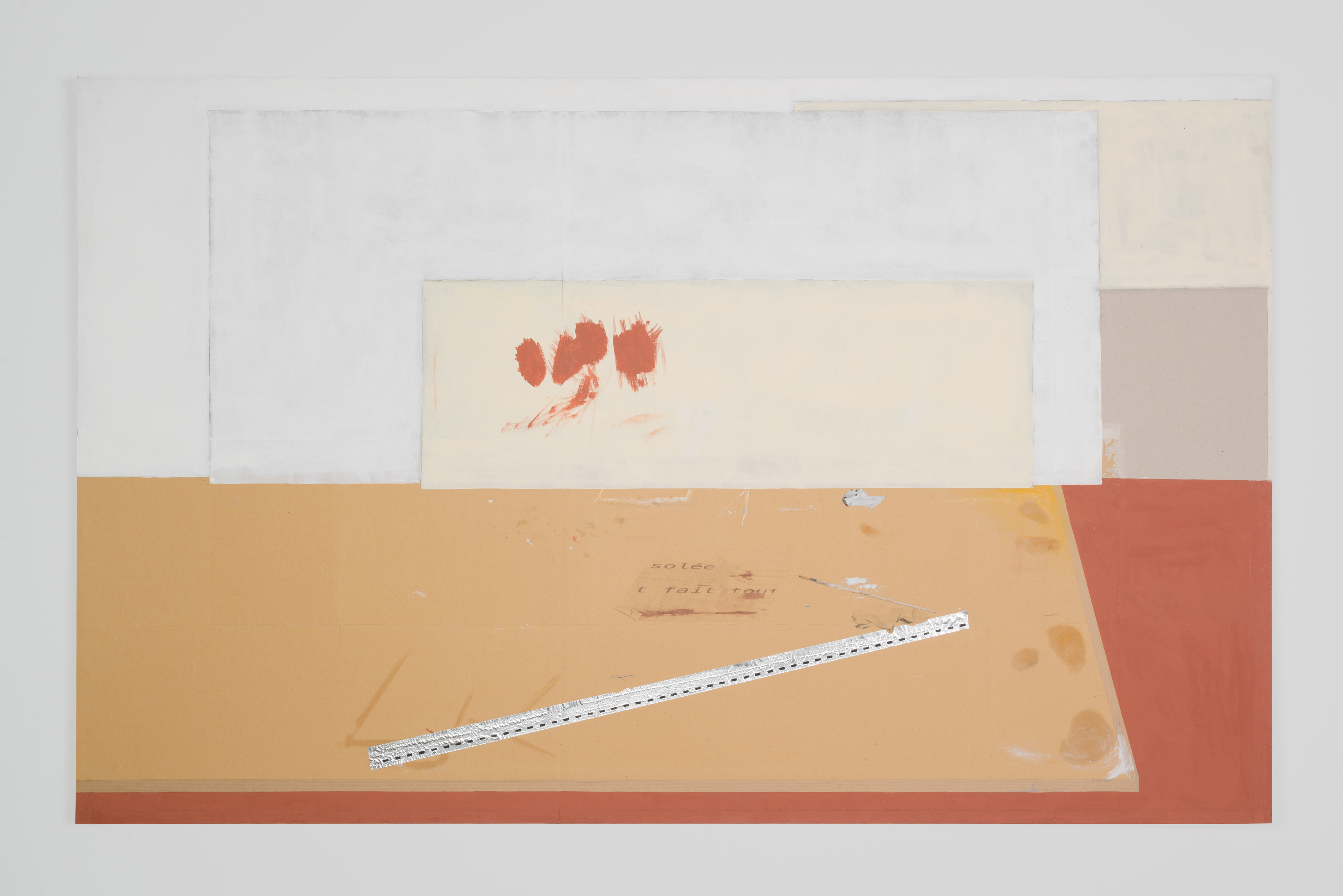
©Maxime Bagni - 📷 Arthur Crestani
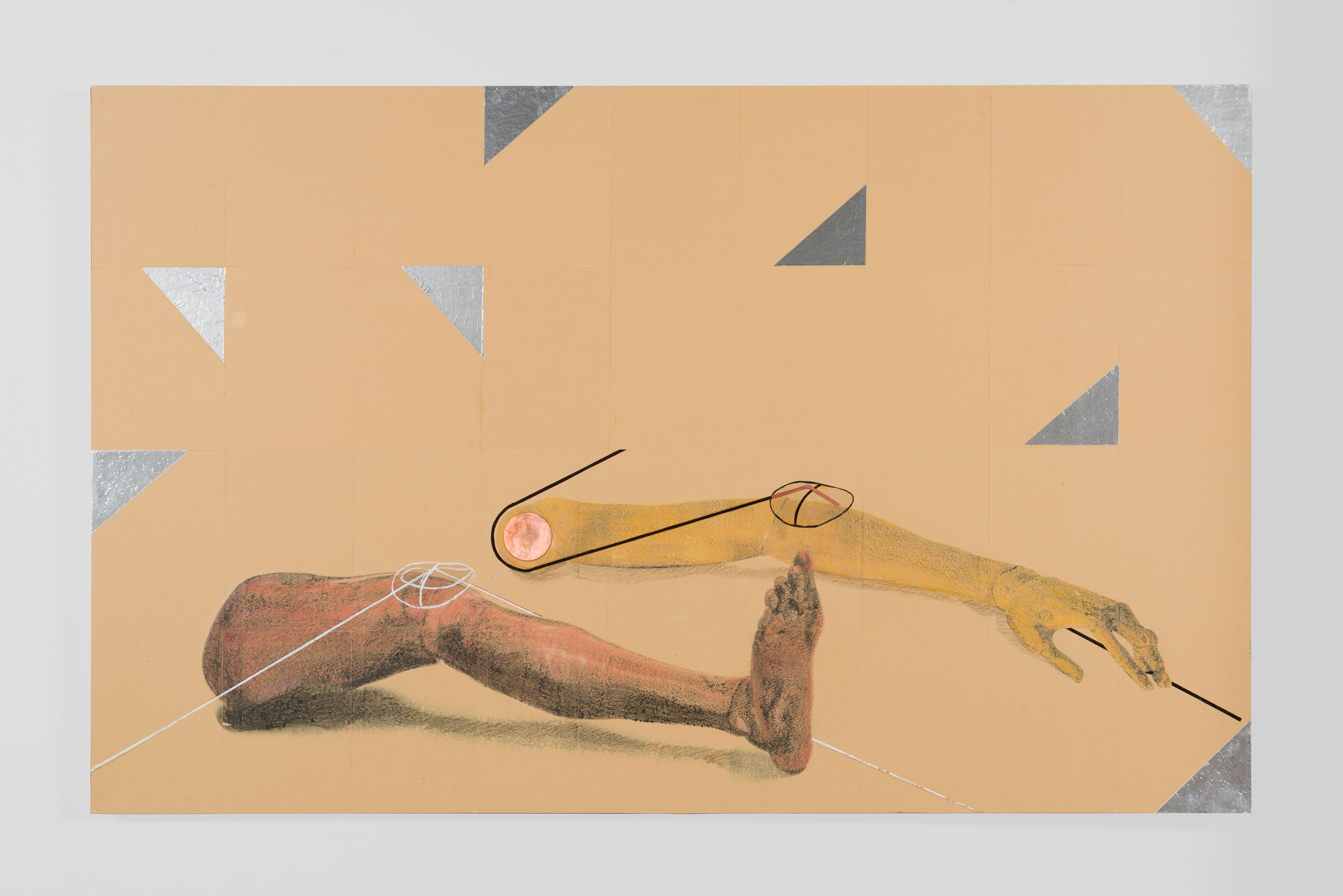
©Maxime Bagni - 📷 Arthur Crestani
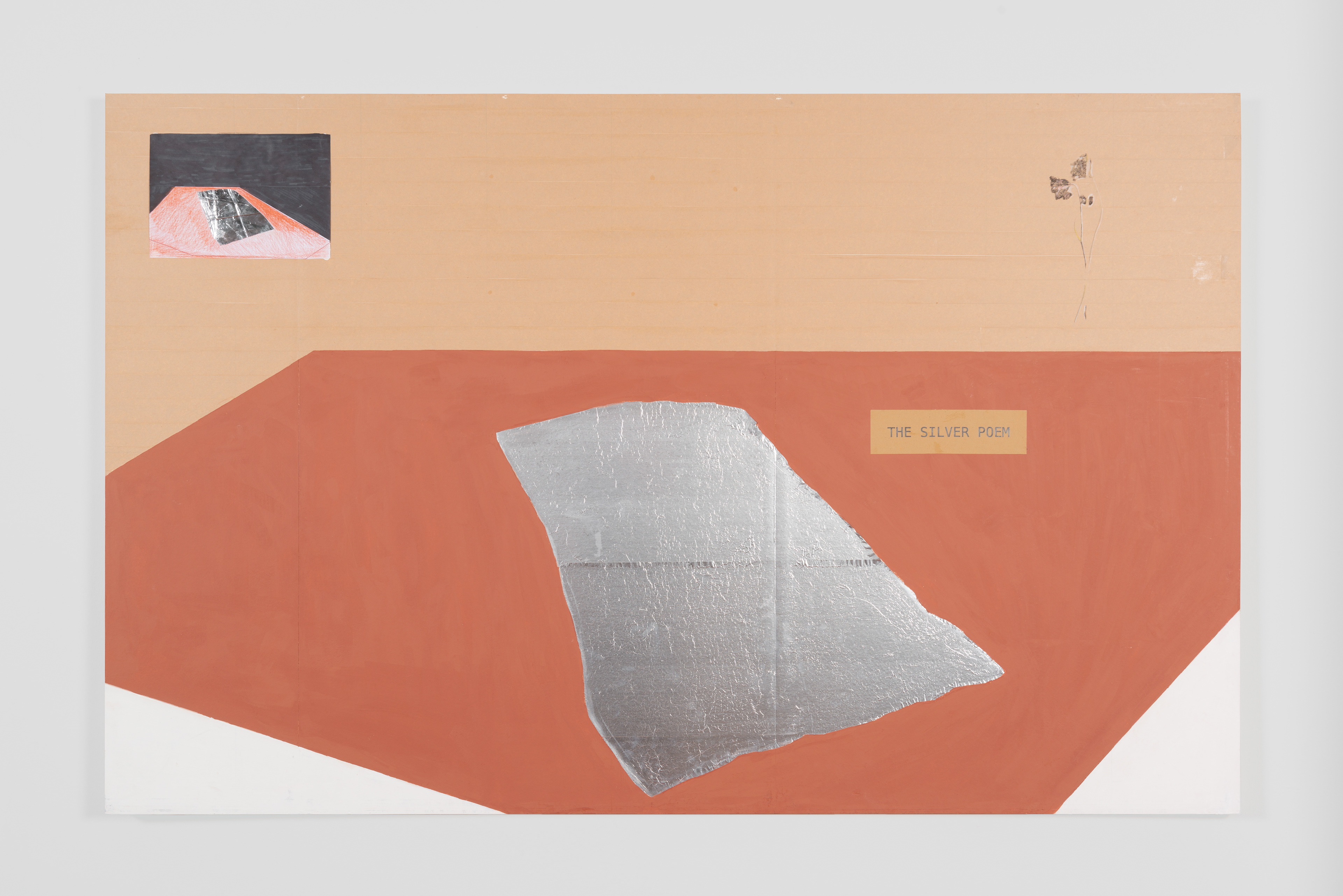
©Maxime Bagni - 📷 Arthur Crestani
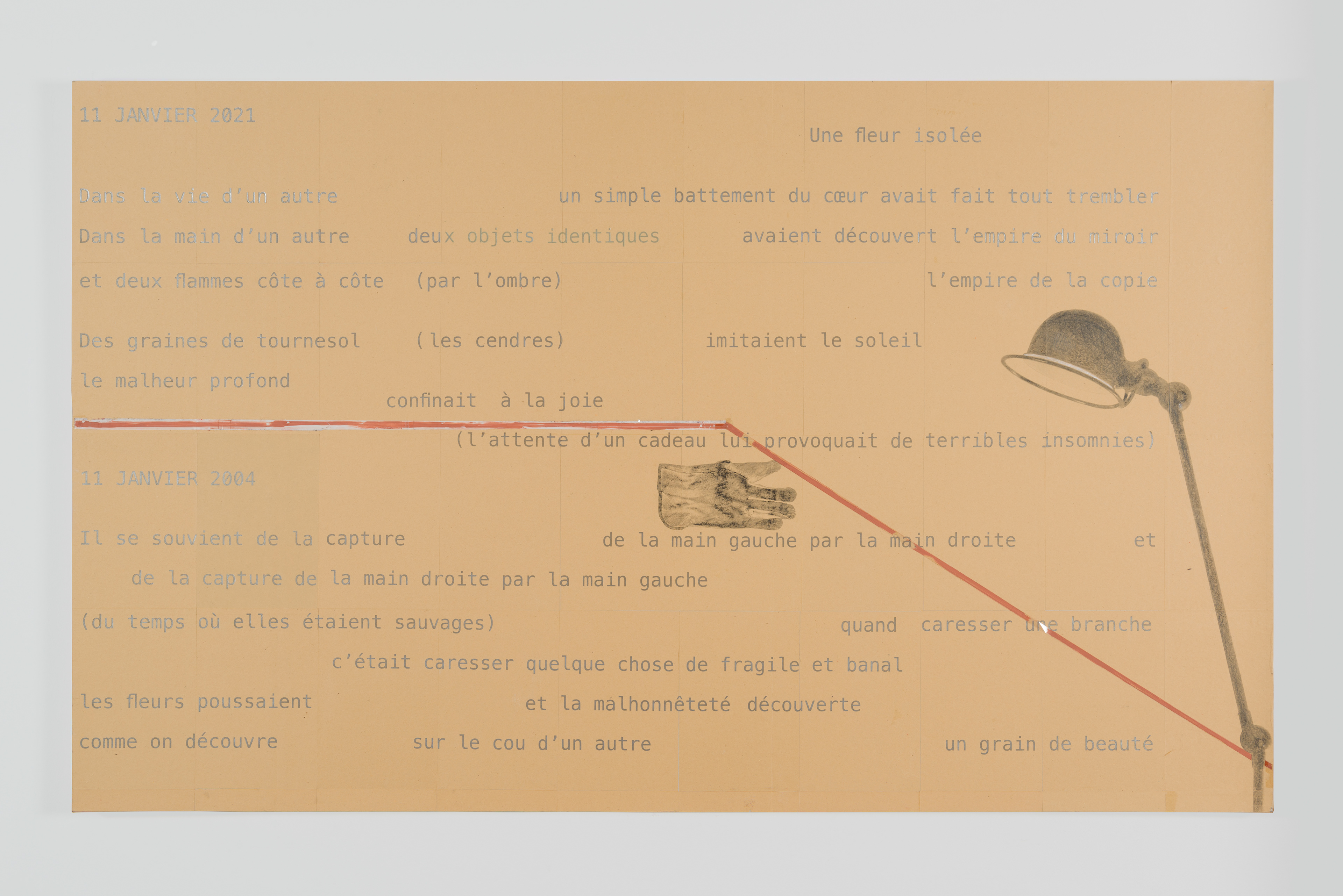
©Maxime Bagni - 📷 Arthur Crestani
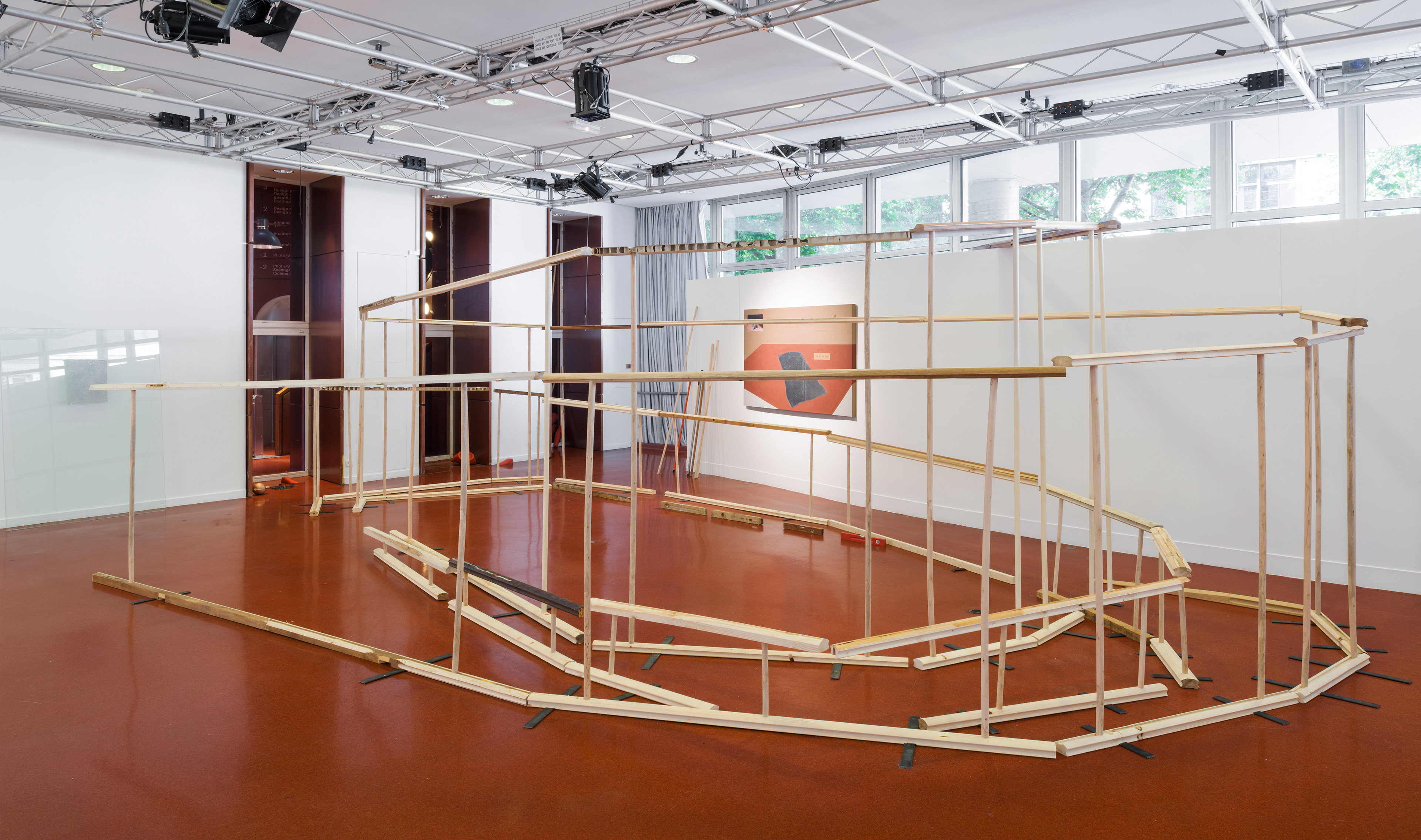
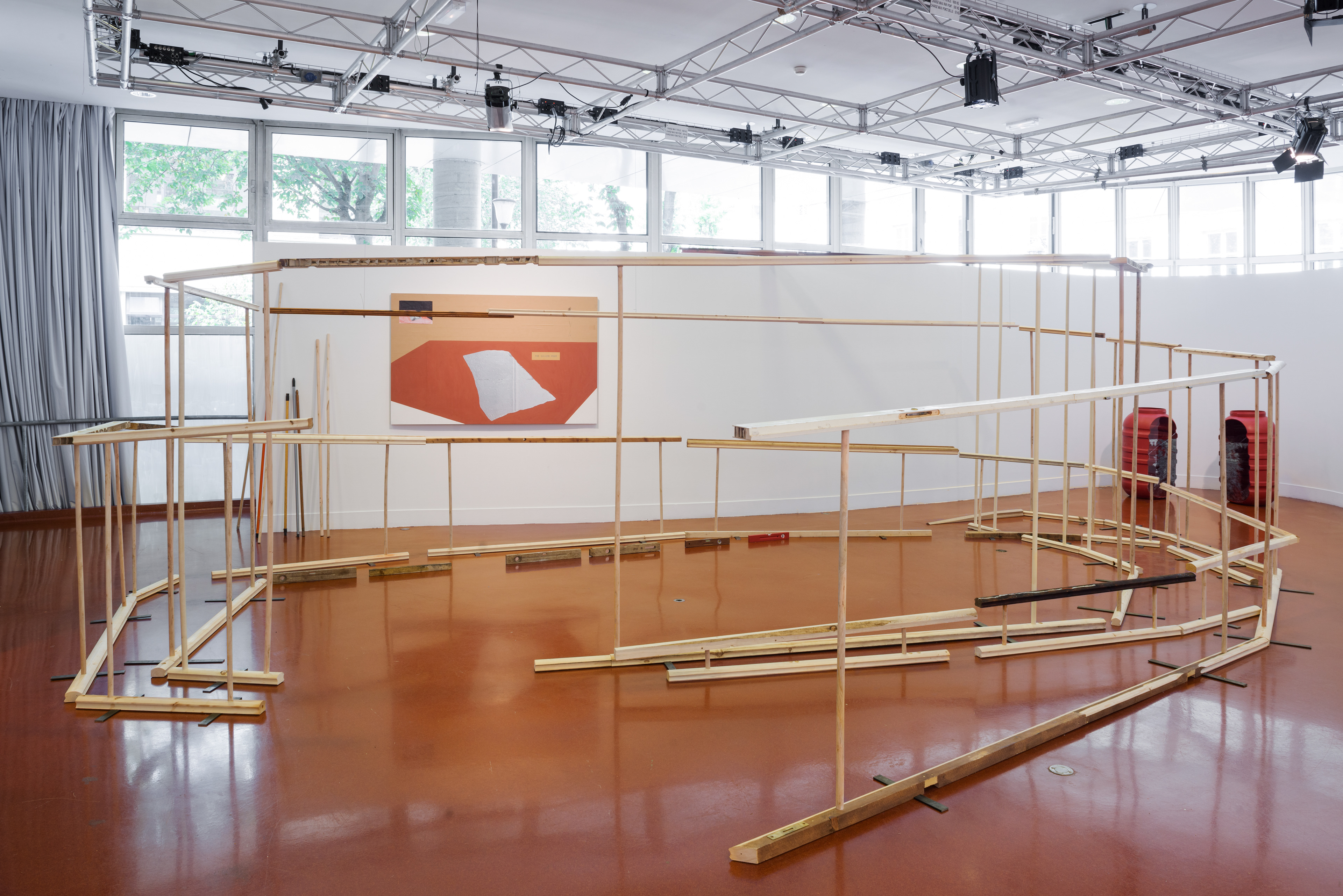
The Uninhabitable Flesh of Architecture, 2022
I designed this installation as the setting up of a foundation, a concealed architecture, an interior narrative specific to objects whose appearance comes into contact with the innocuous.
Thus, the threshold between the interior and the exterior of the works presented is blurred. Debris from construction sites close to my studio in Ivry-sur-Seine is collected, transformed, to dialogue with the architectural logic of this exhibition space. Dumpsters, or the ground where they are buried - made invisible - I dig them up to give them another of the properties of what is buried: the foundation.
All the elements collected, the barrels, the wood forming the ramp, the brooms, the glass, retain a strong link with their site of origin. Their displacement took place spatially, but also symbolically: from the suburban construction sites of Val-de-Marne where nothing dissociated them from the banal, to the exhibition space and its red, interior, phantasmagorical logic. The debris becomes the shadow of the architecture, an imprint of the building, a sum of anonymous gestures. It is both the vestige of an expenditure and already the monument.
The movements that interest me the most are, according to a Deleuzian expression, aberrant movements. They obey a logic that is not rational and decenters us. Thus the fragility of the barrels, made unmovable by the addition of glass, regardless of their weight. The spiral of the ramp obeying its logic which confuses beginning and end, upward and downward movement, what founds and what is founded. Similarly, the mirrors created for the installation, from a thermometer metal with a melting point of 37 degrees, have the potential to liquefy and drip at room temperature, fueling a confusion between image and matter.
In this exhibition, the sculptural function tends to encroach on the environment. Here everything is landscape. The sculptures that make up the installation are made of everyday matter, the world of exchanges, work, the domestic.
They nevertheless testify to real or dreamed pre-architectural functions: furniture, structures, mechanisms, tools for measuring space, temperature.
The body is, in this metaphorical logic, present in these objects. If it is through representations - the barrels like two lungs, the image in mirrors or the omnipresence of flesh red - these are also psychological attributes that increase its presence. The silver Rorchach test in the plastic canisters, the fragments of texts with unconscious accents, are so many simple displaced forms, involving several levels of reading.
The lid of a canister, the result of the melting of typographic lead and scuba diving weights, is the alchemical attempt to combine the letter and the descent into an abyss. In this fusion, the letter, symbolic of the story, meets the aberrant movement of its movement in the depths of the psyche.
The human hand is here, according to the formula of Marguerite Duras, a negative hand: in the shape of the debris carved into the handrail of a staircase, made for gripping, it is omnipresent. Also in the utensil handles.
Many of the materials used in the exhibition are related to care. Lead and mercury have been credited with curative properties, their toxicity no longer needs to be demonstrated. The Platonic concept of the Pharmakon, a single object that can be poison and cure, helps me find a more personal perspective in the cycle of life and death, of new and old. By this link, I can stop seeing an agonizing opposition, and appreciate the transformations at work in everything that collapses.
I thought of this proposal by seeking resources from artists, authors and architects alike. Marco Cruz, from whom I borrow this title The Inhabitable Flesh of Architecture, uses the analysis of works of art in his theory of architecture. In the same way I use the inspiration of buildings: by abolishing any distinction between functional and deserted, habitable and uninhabitable.
©Maxime Bagni